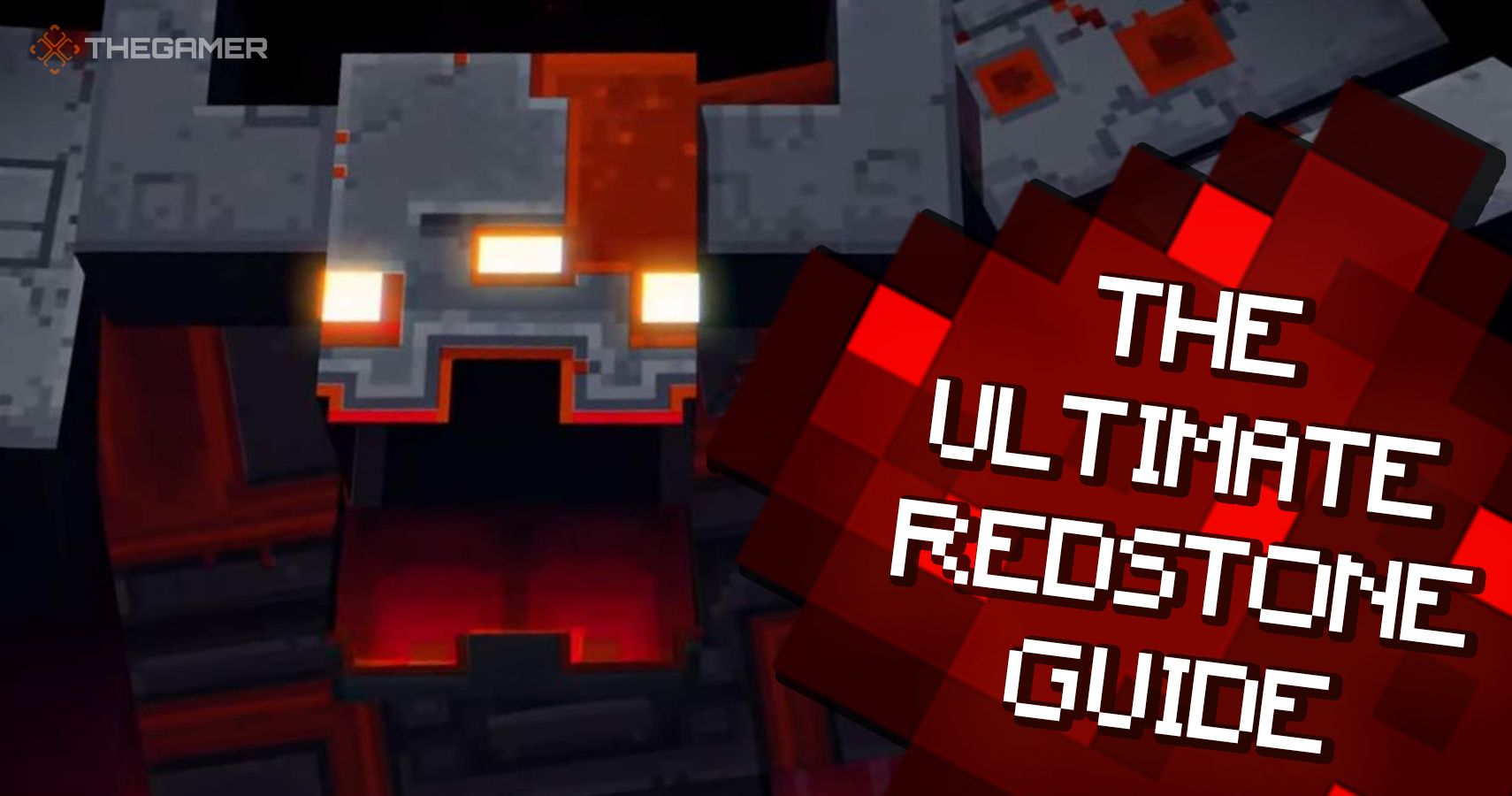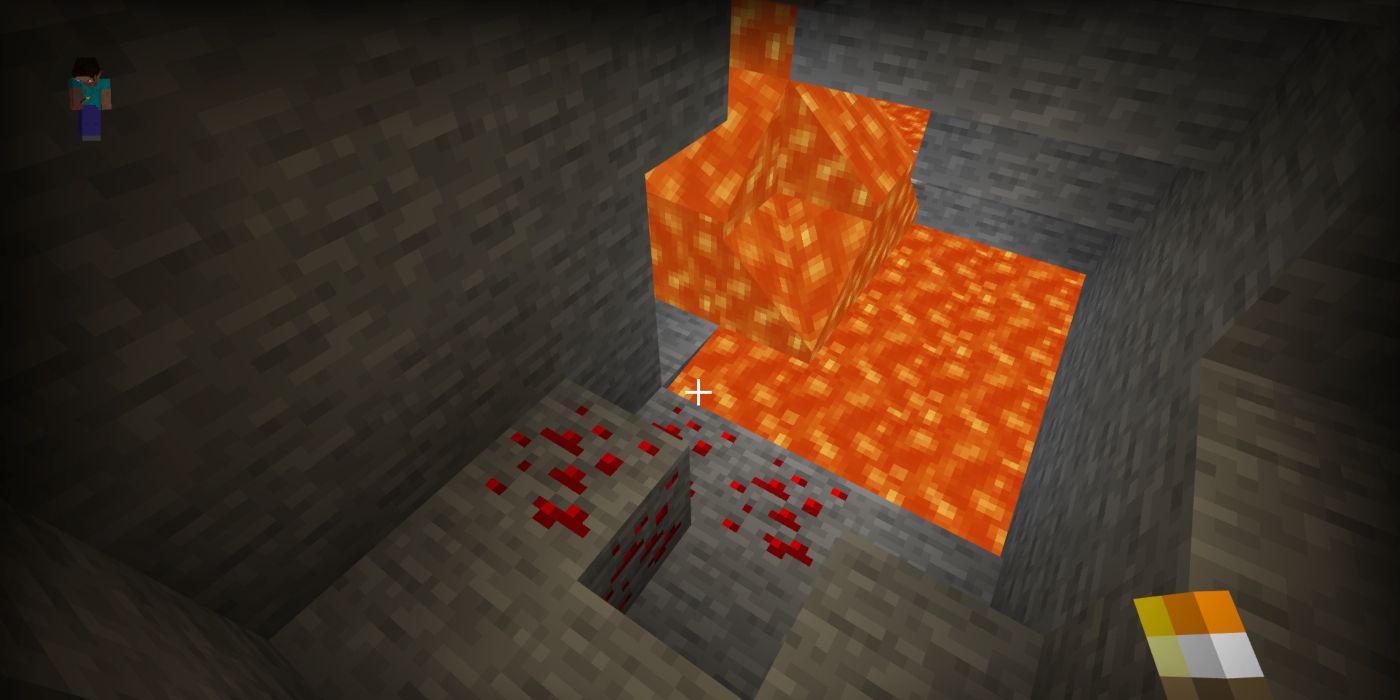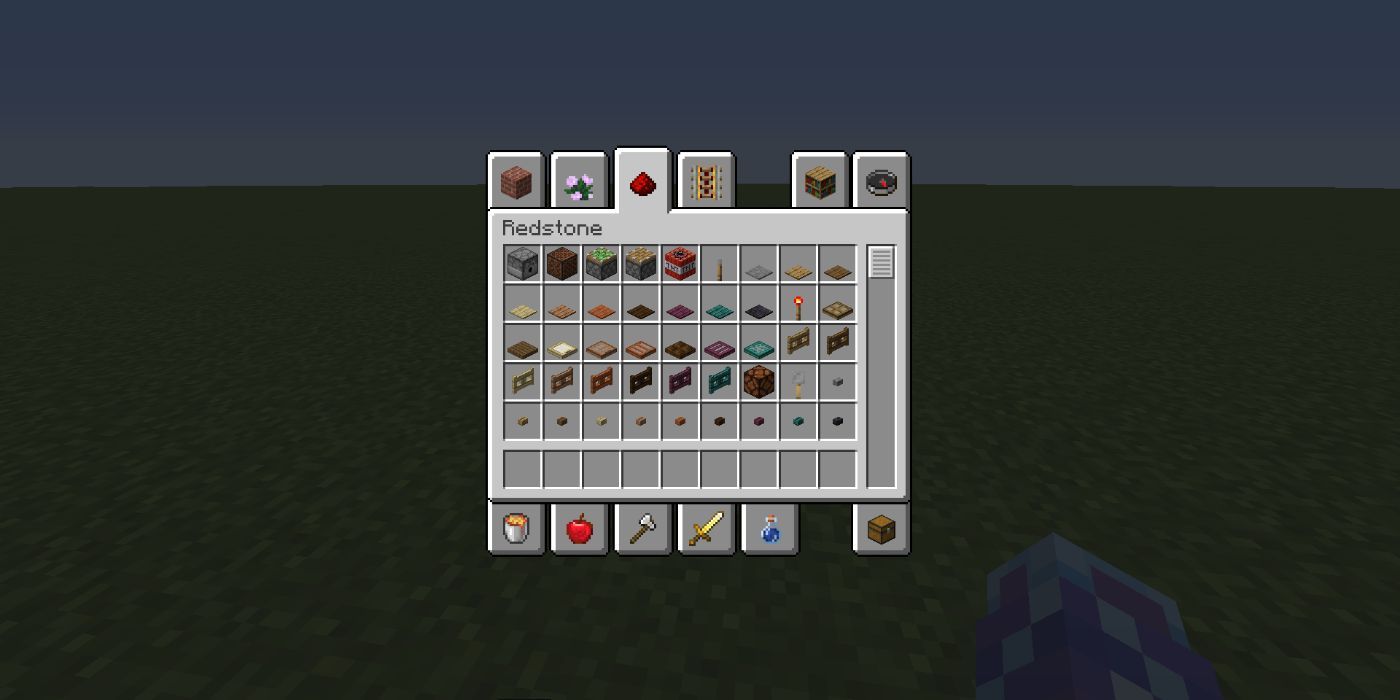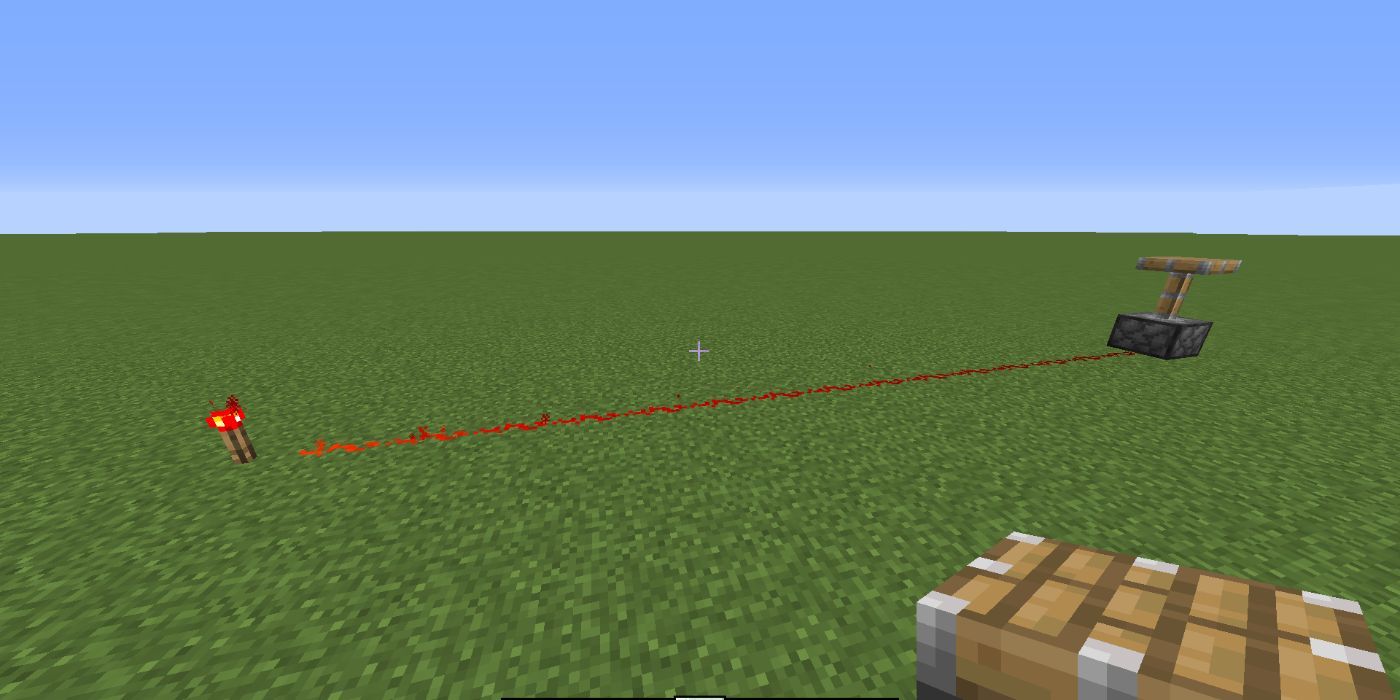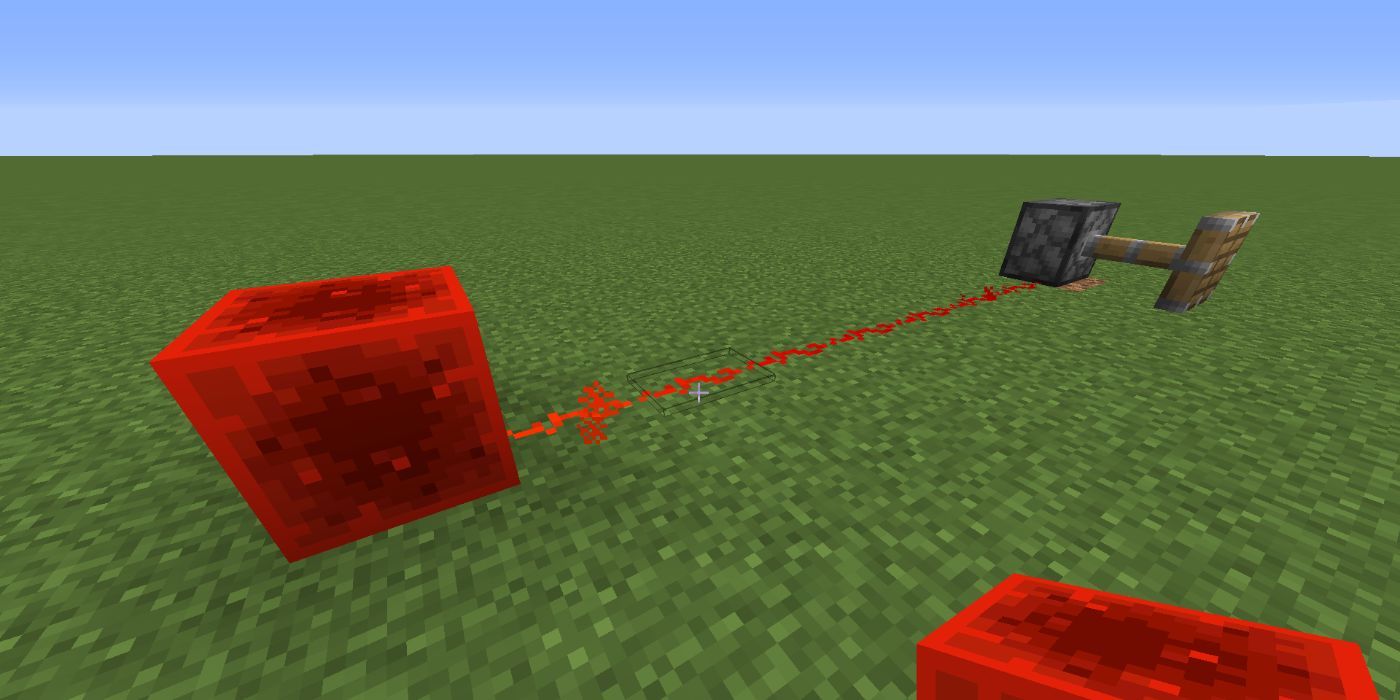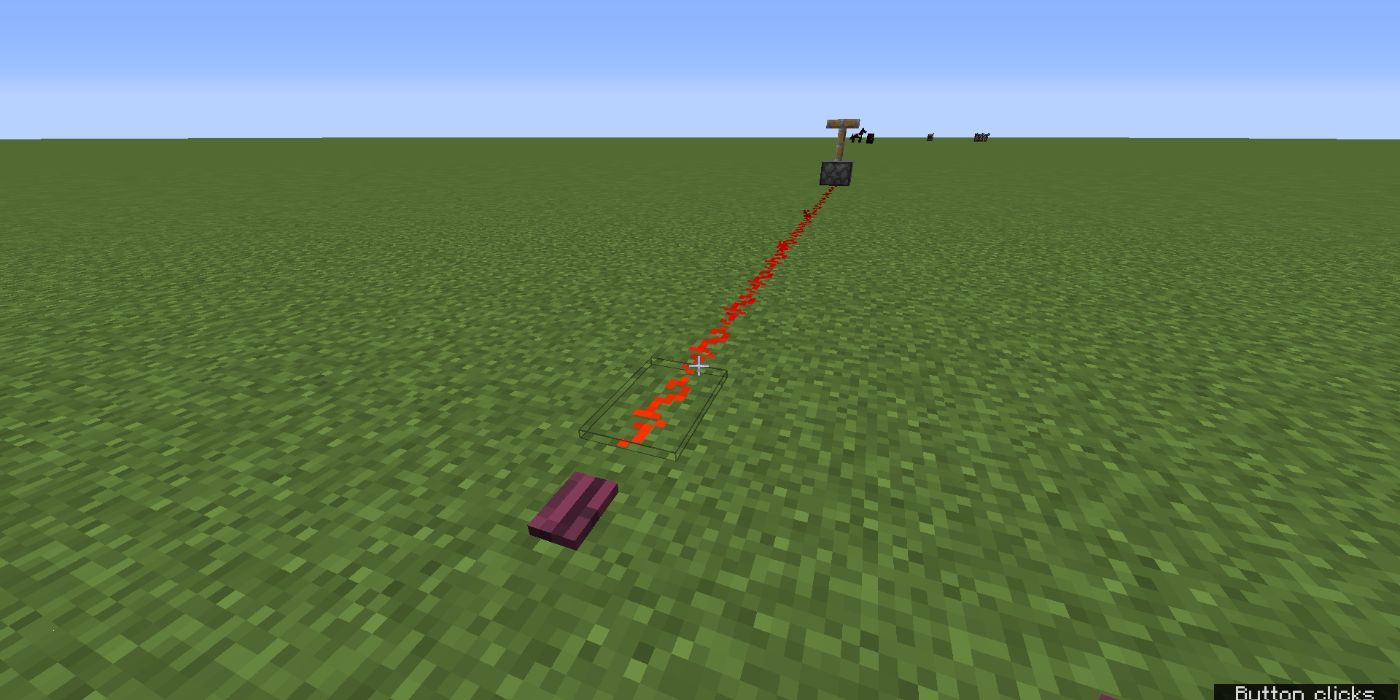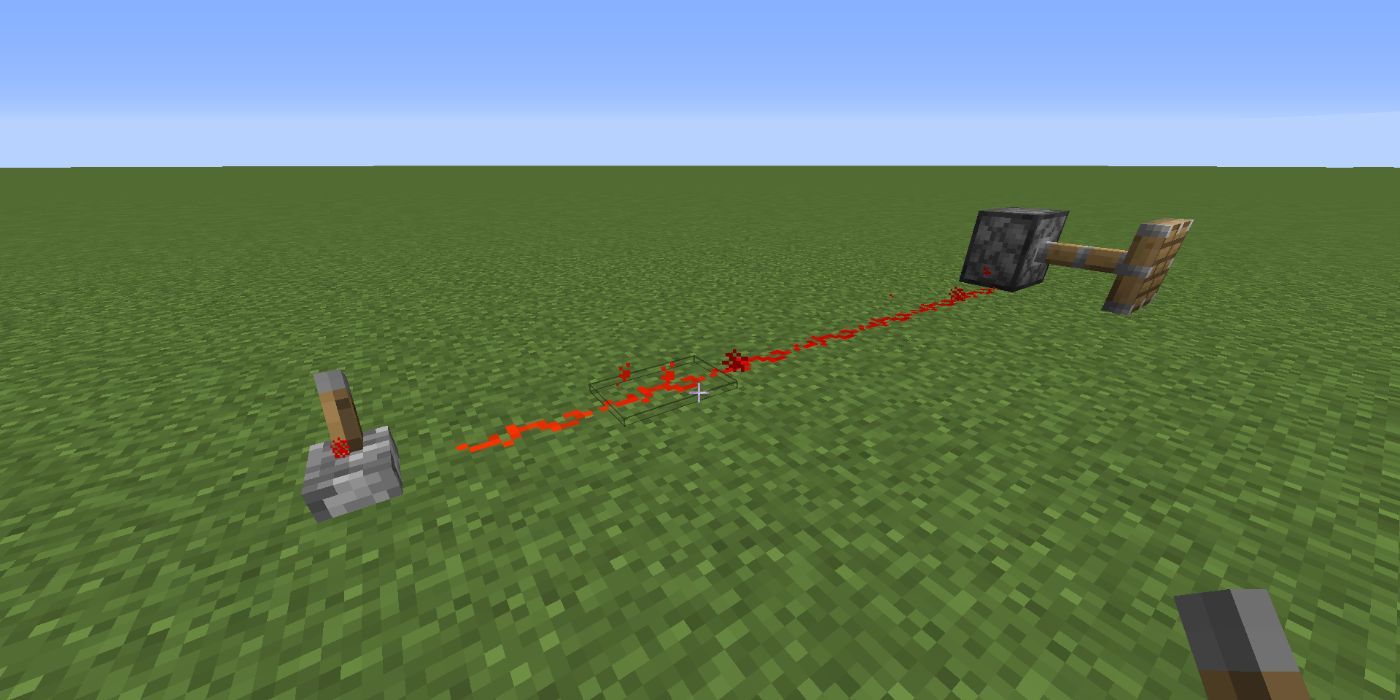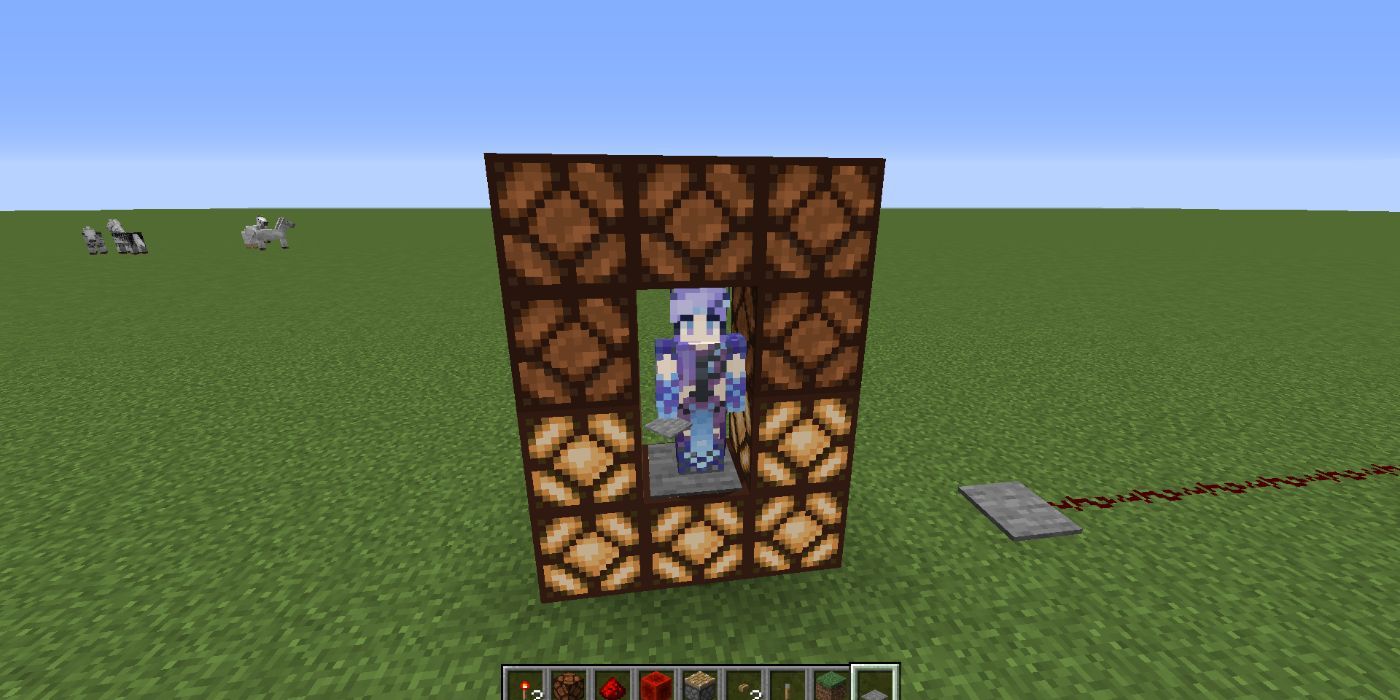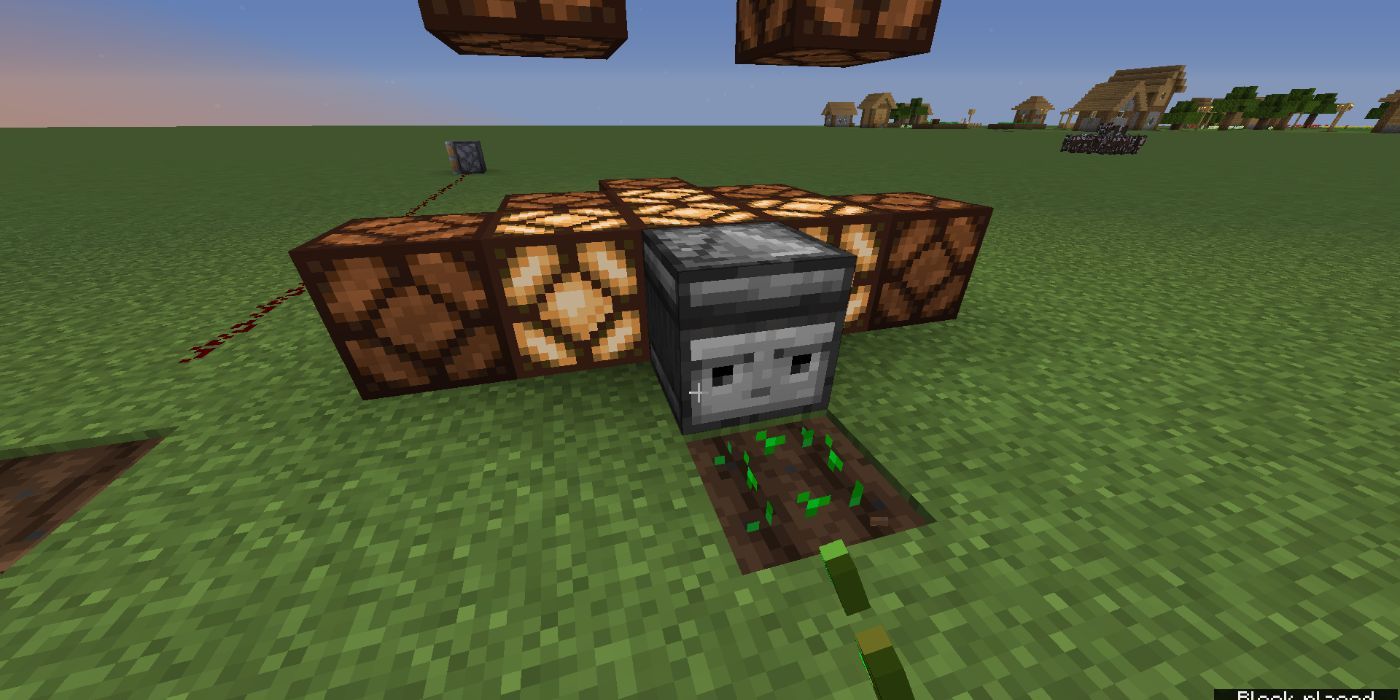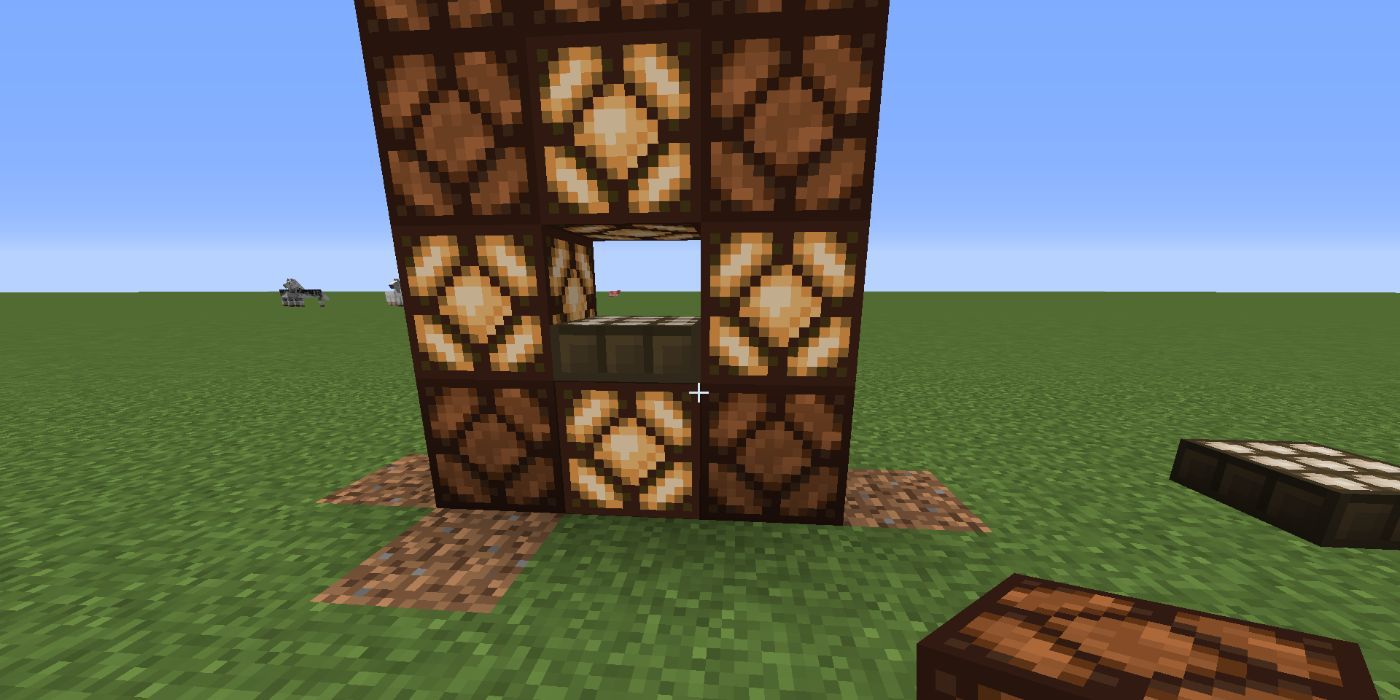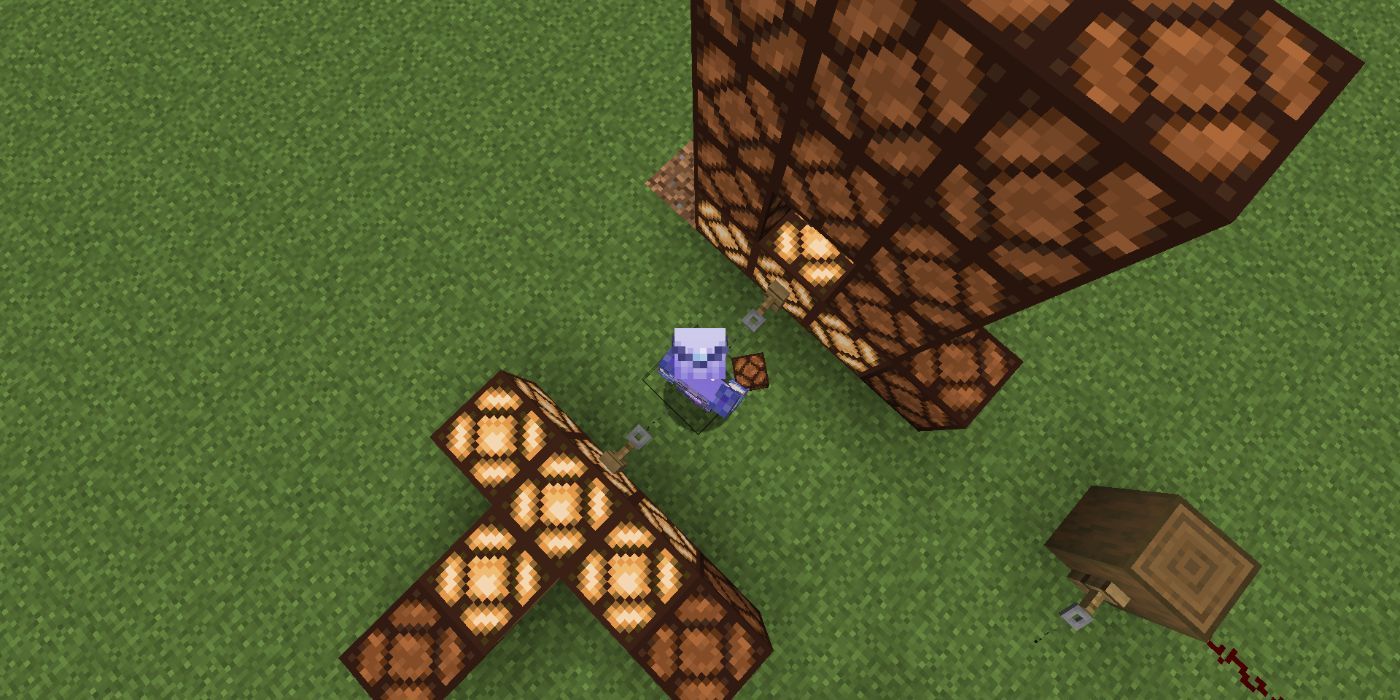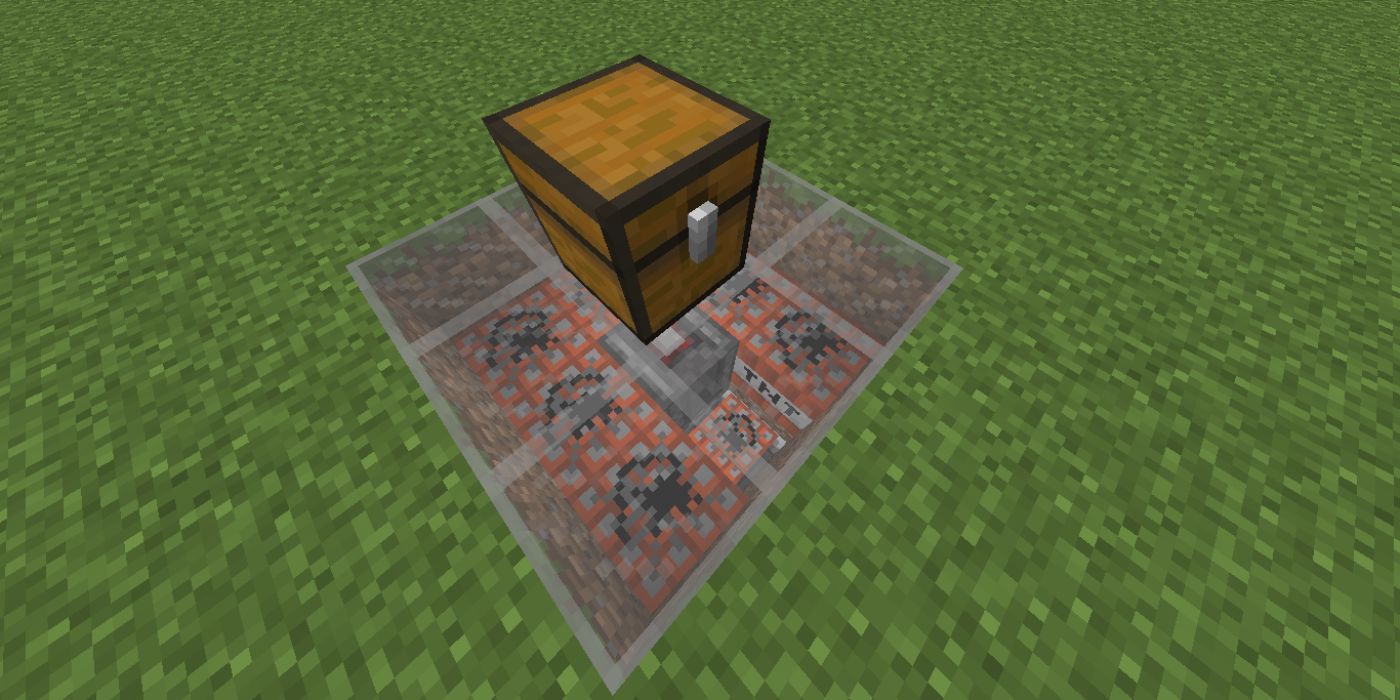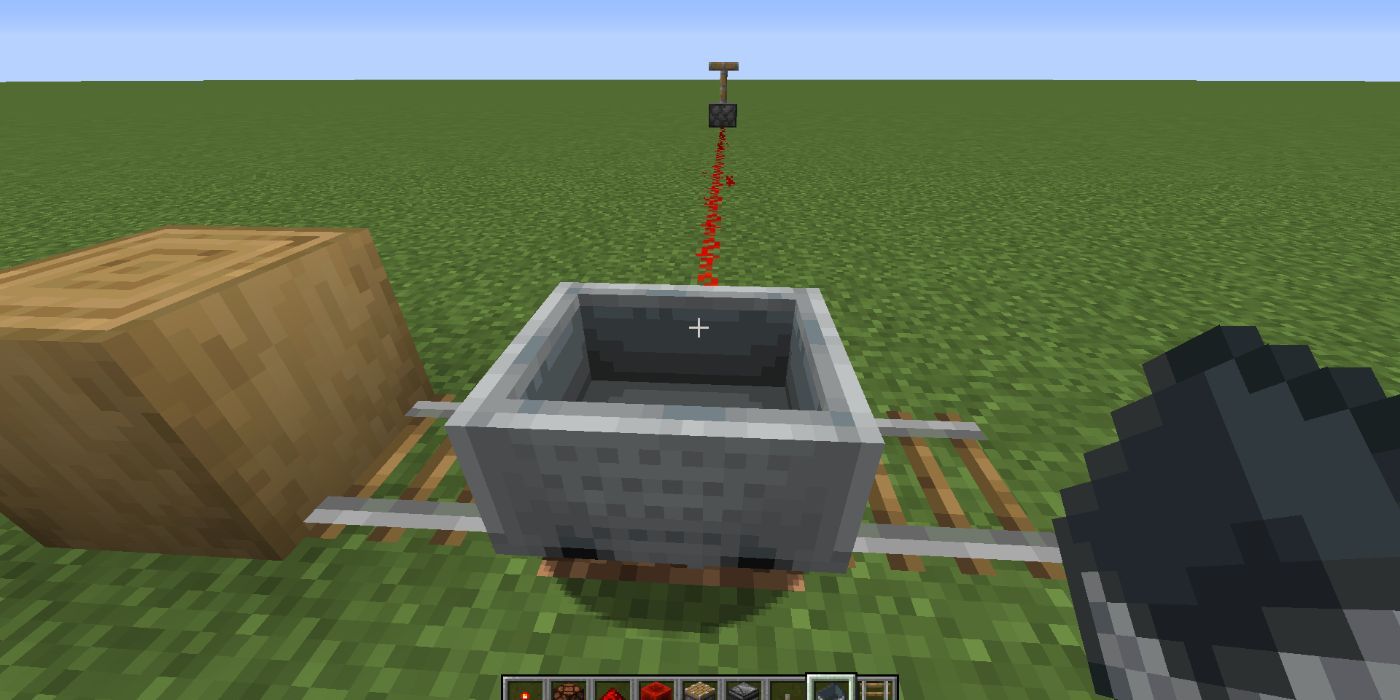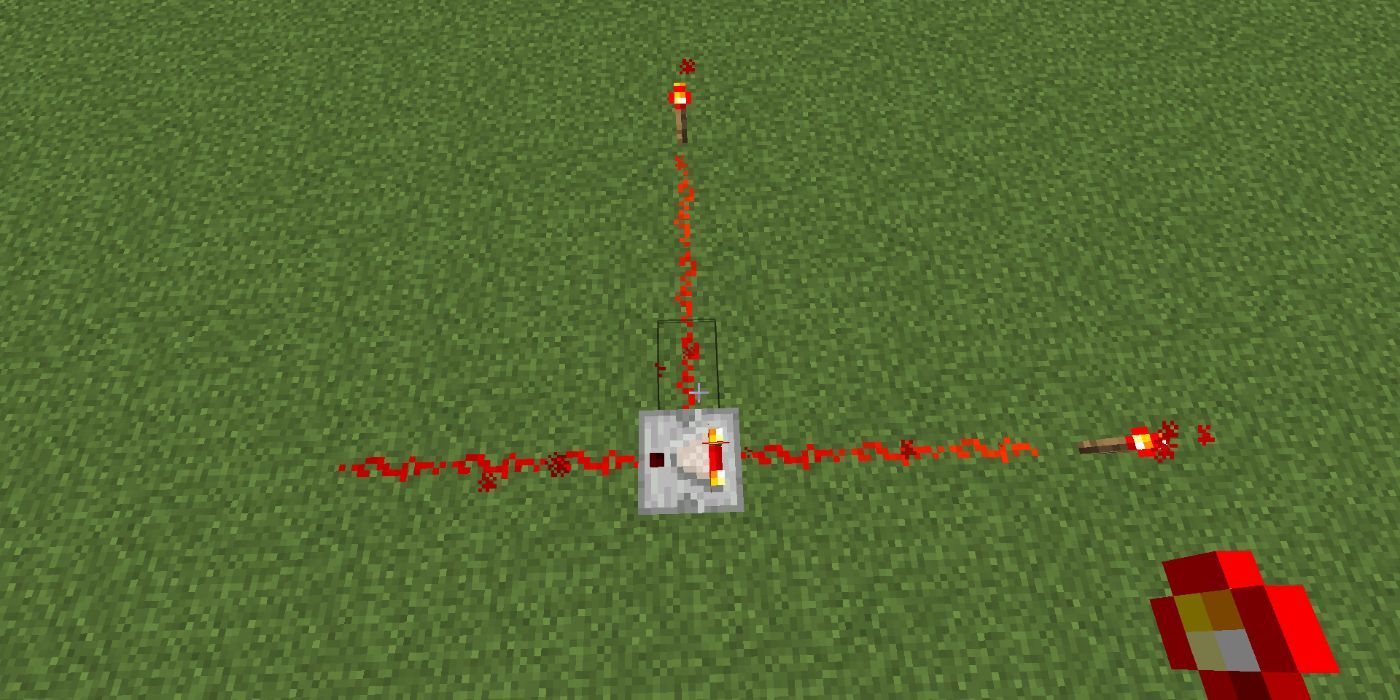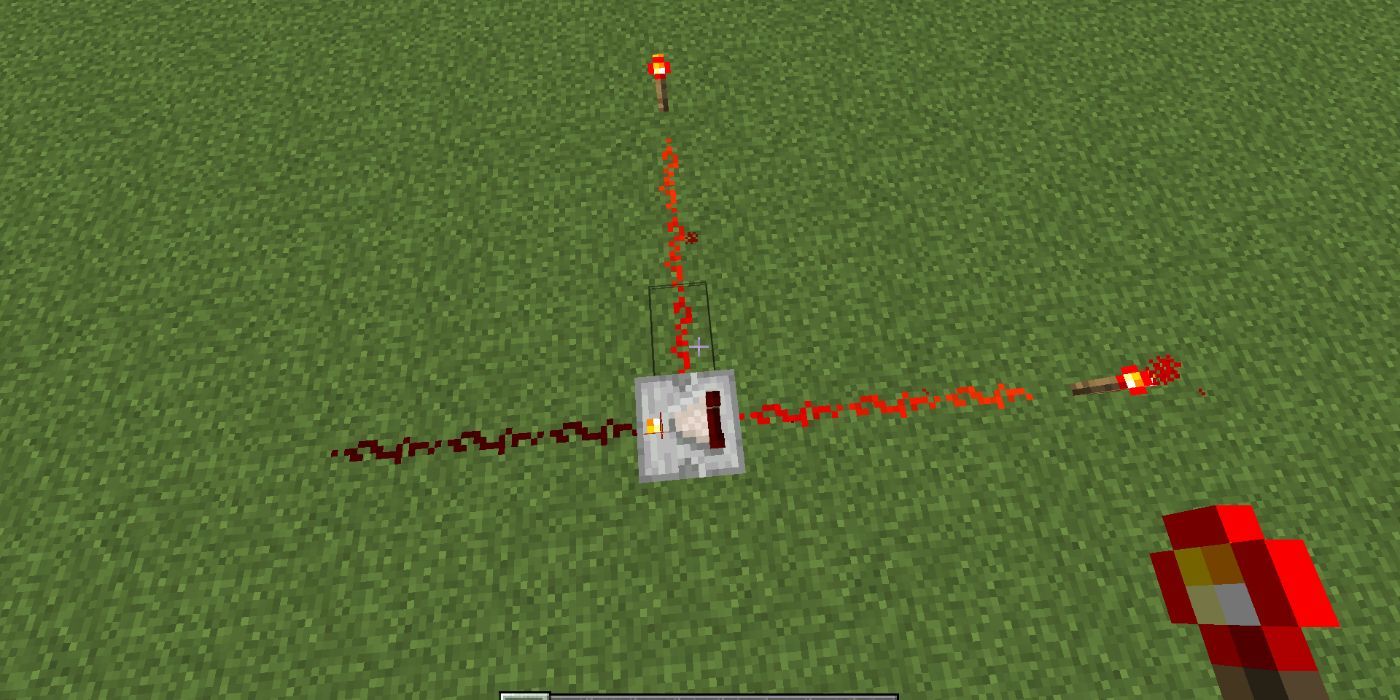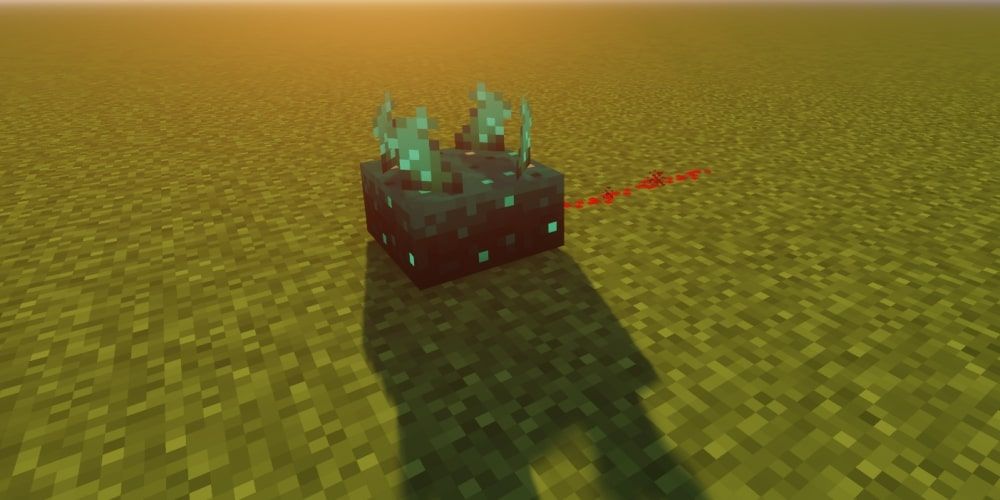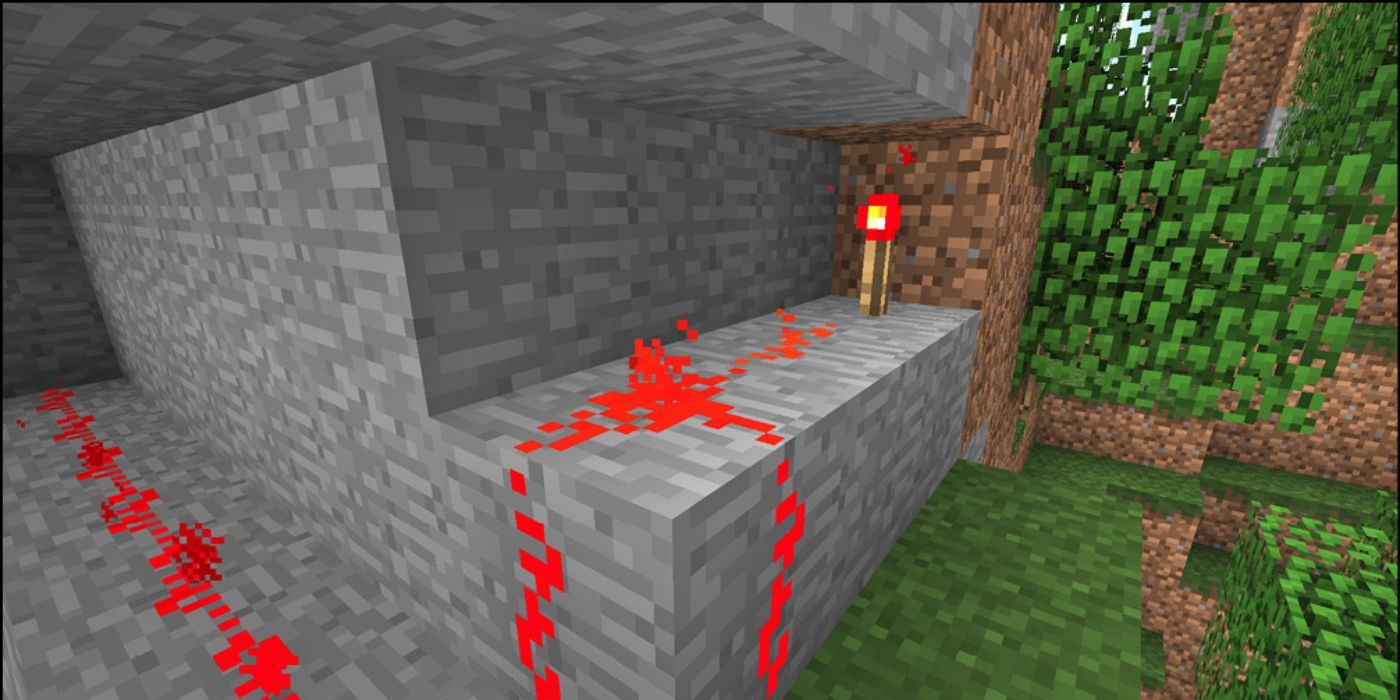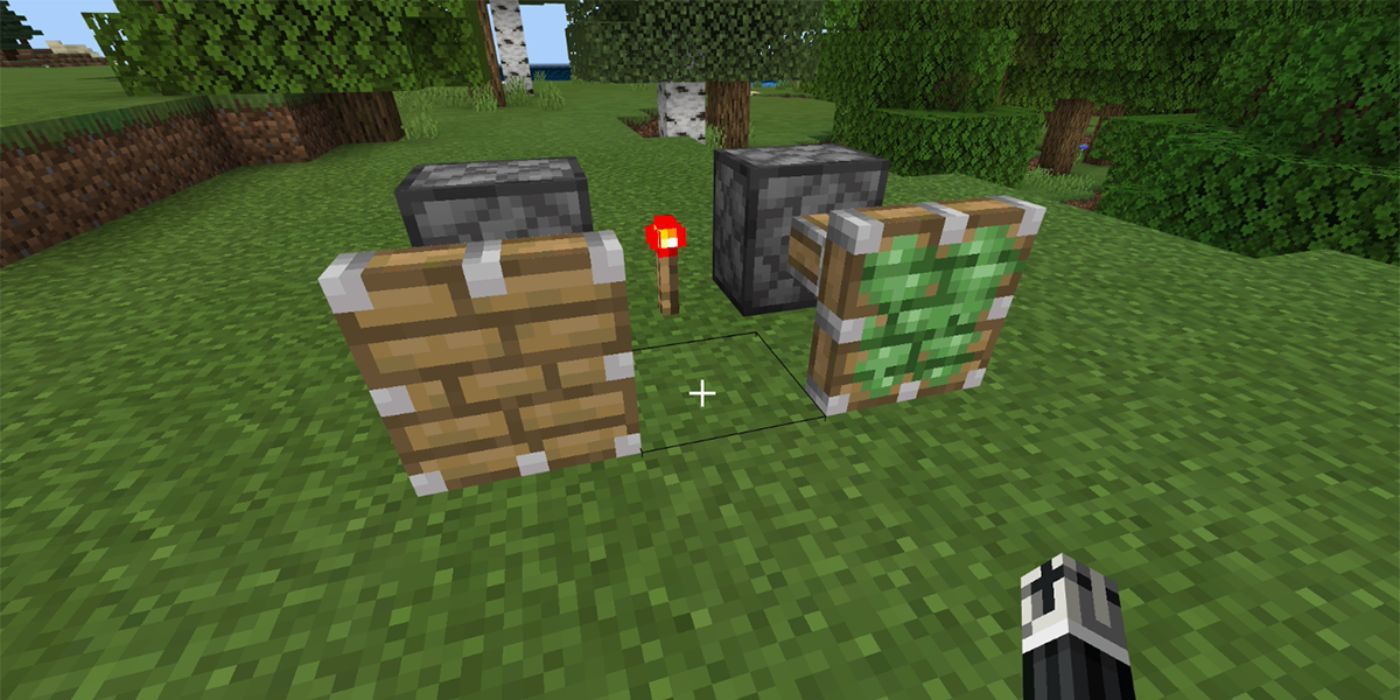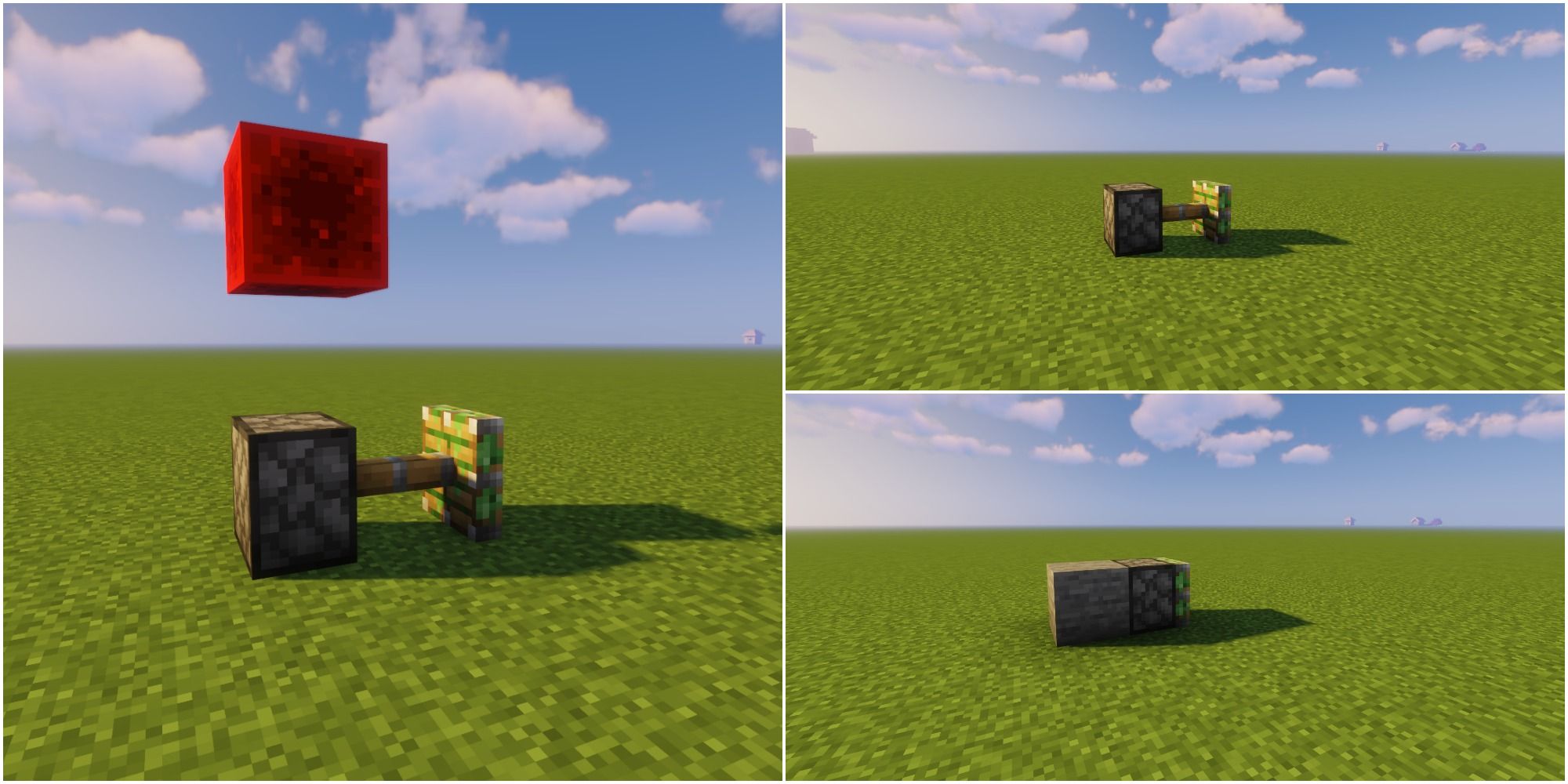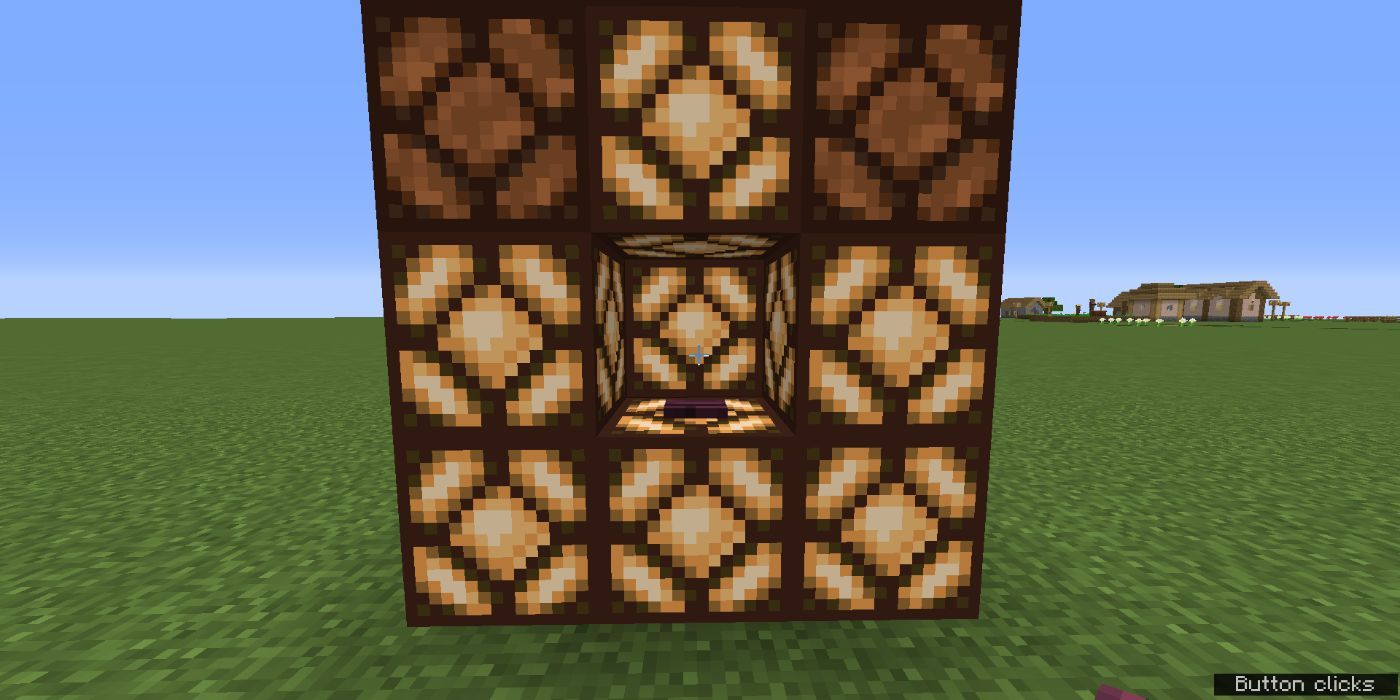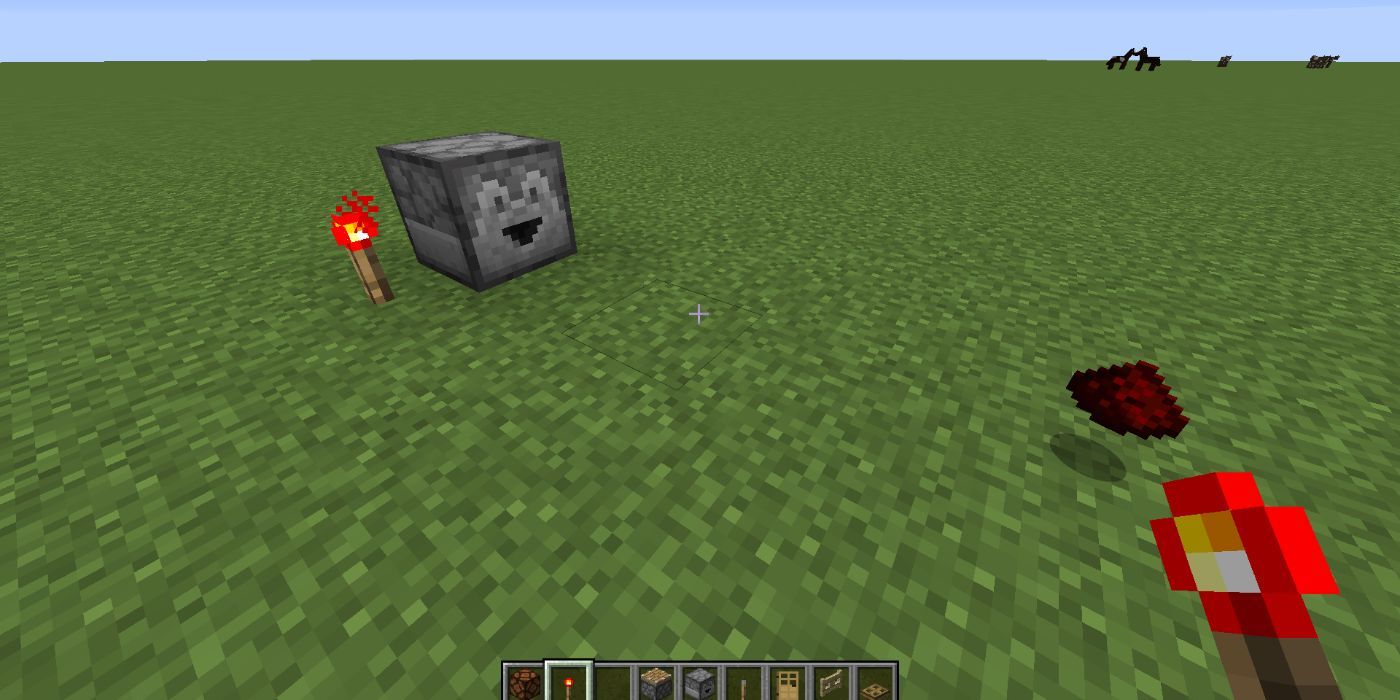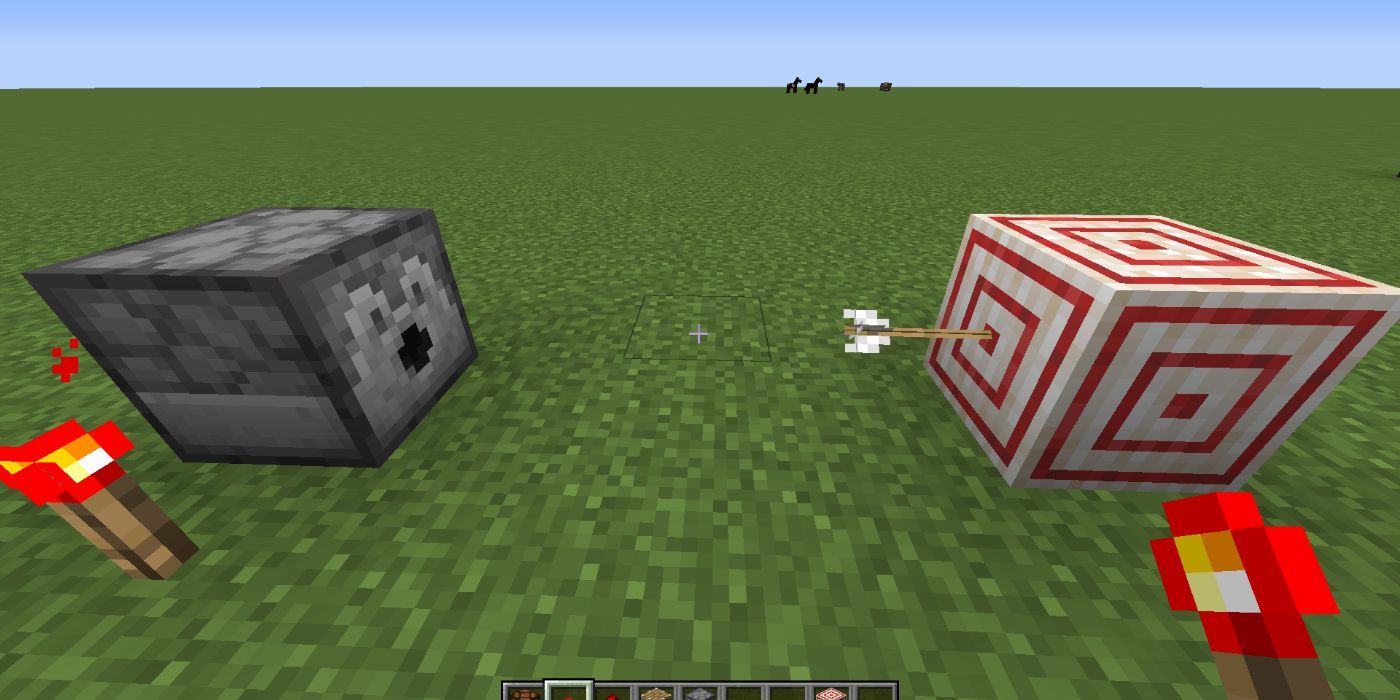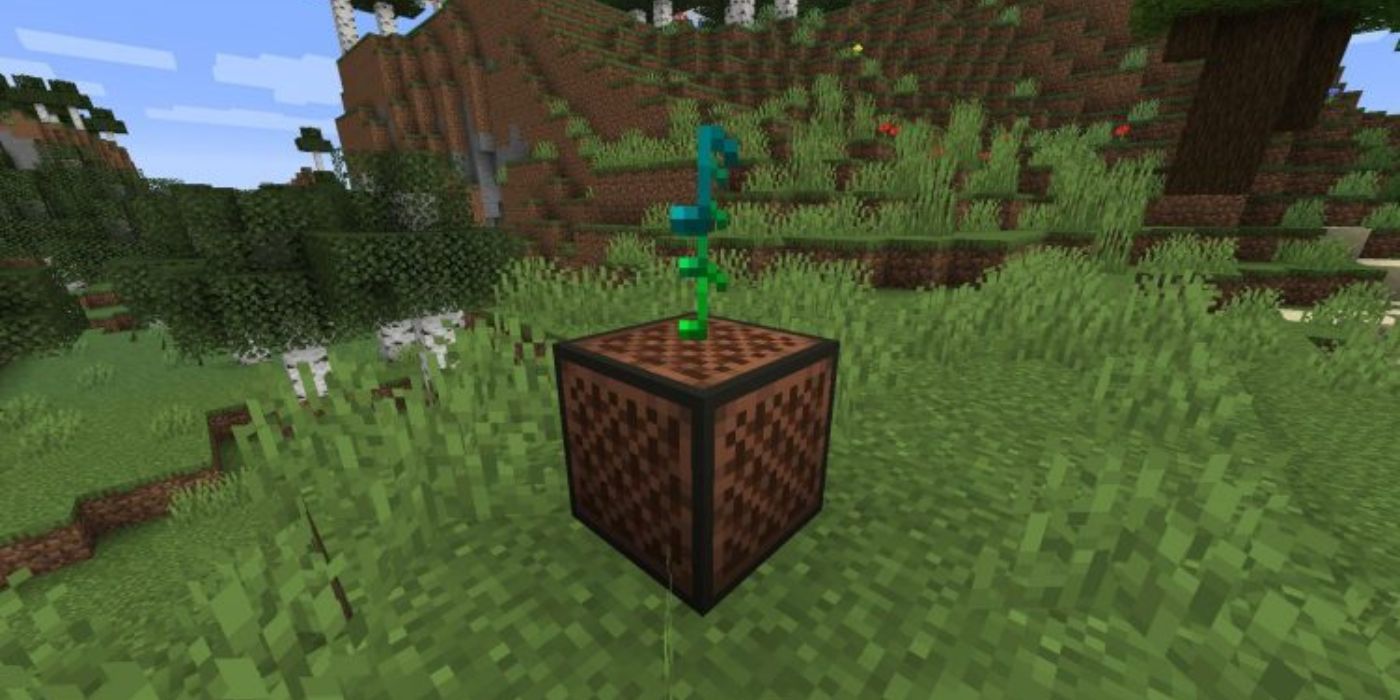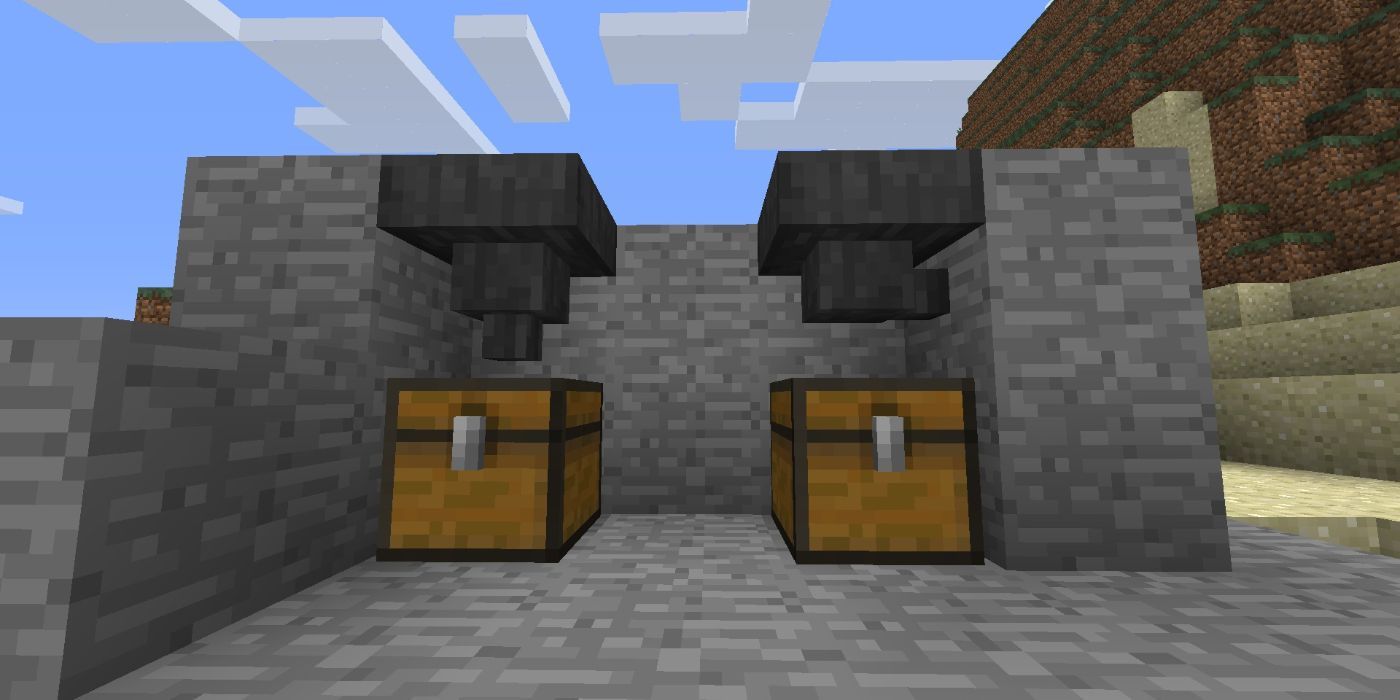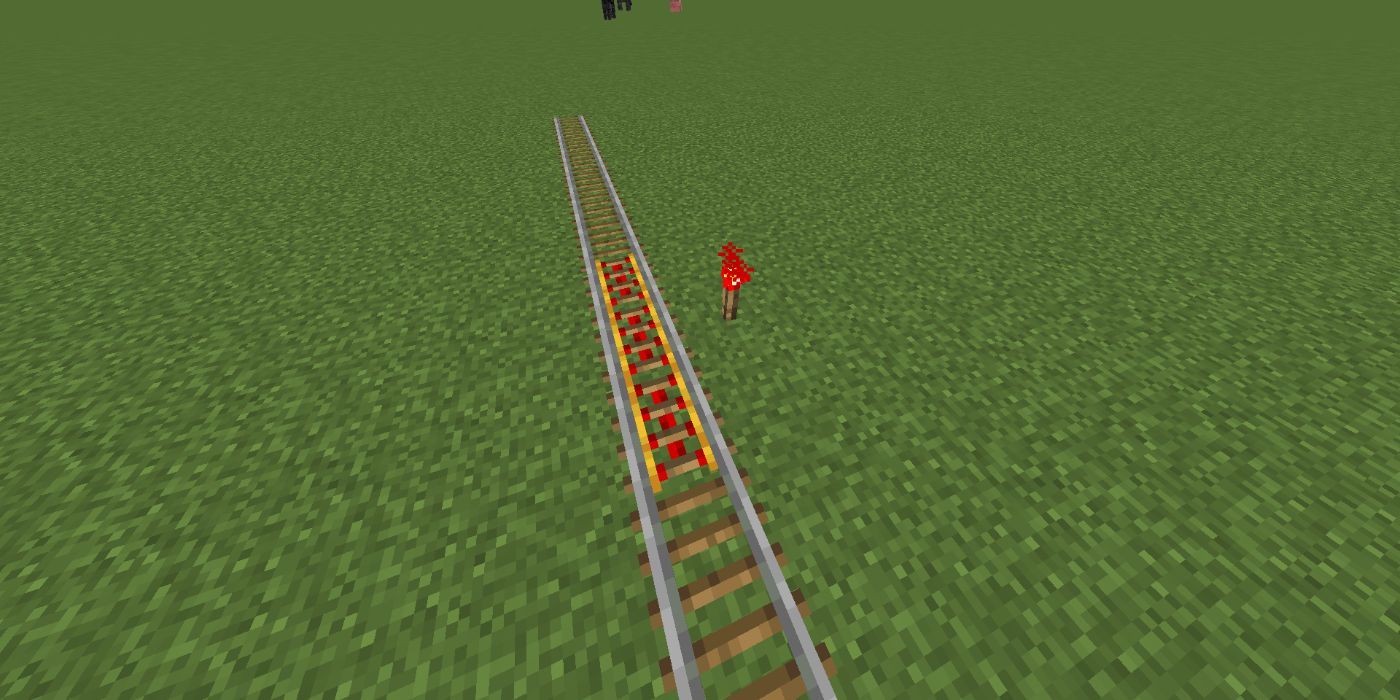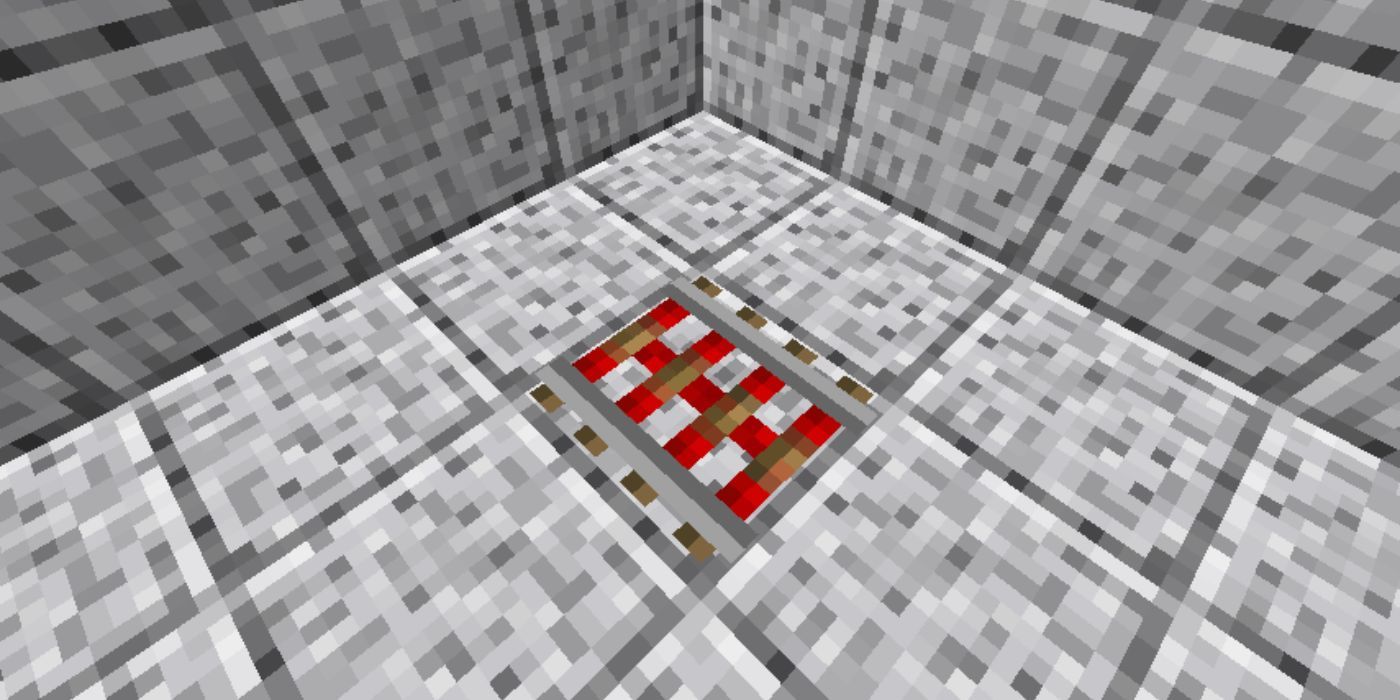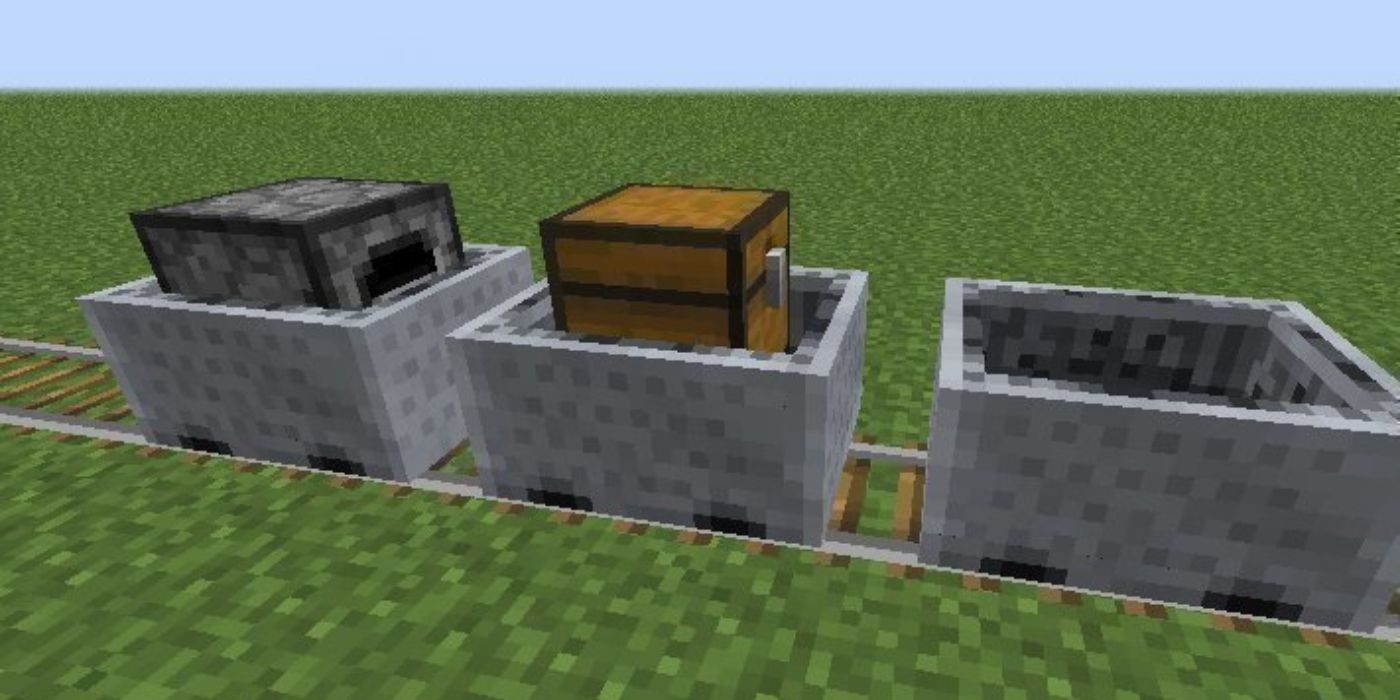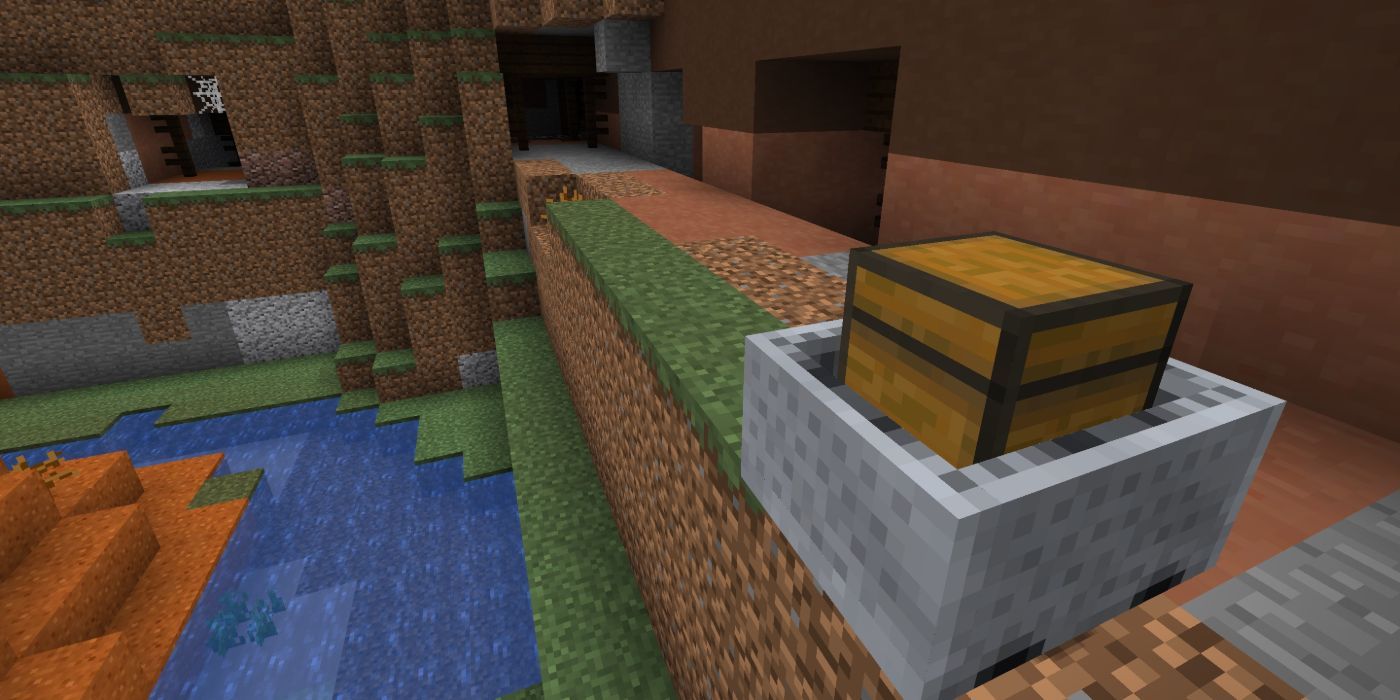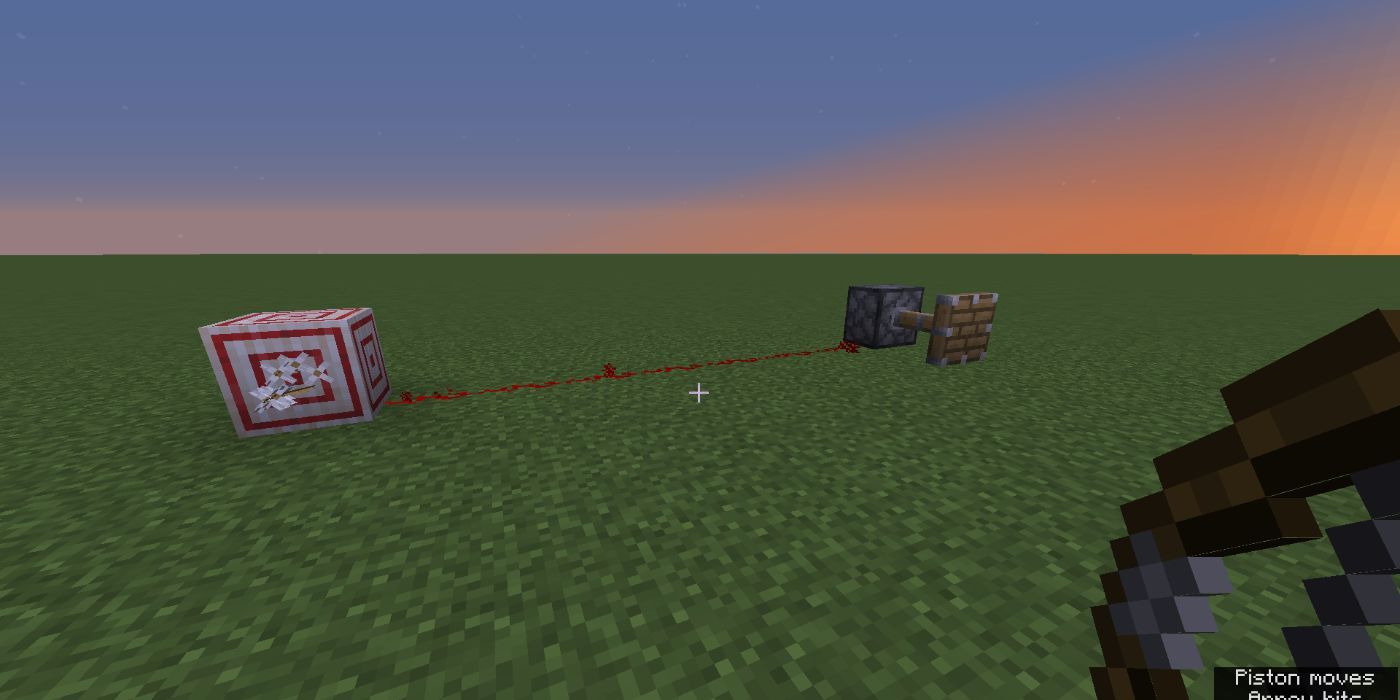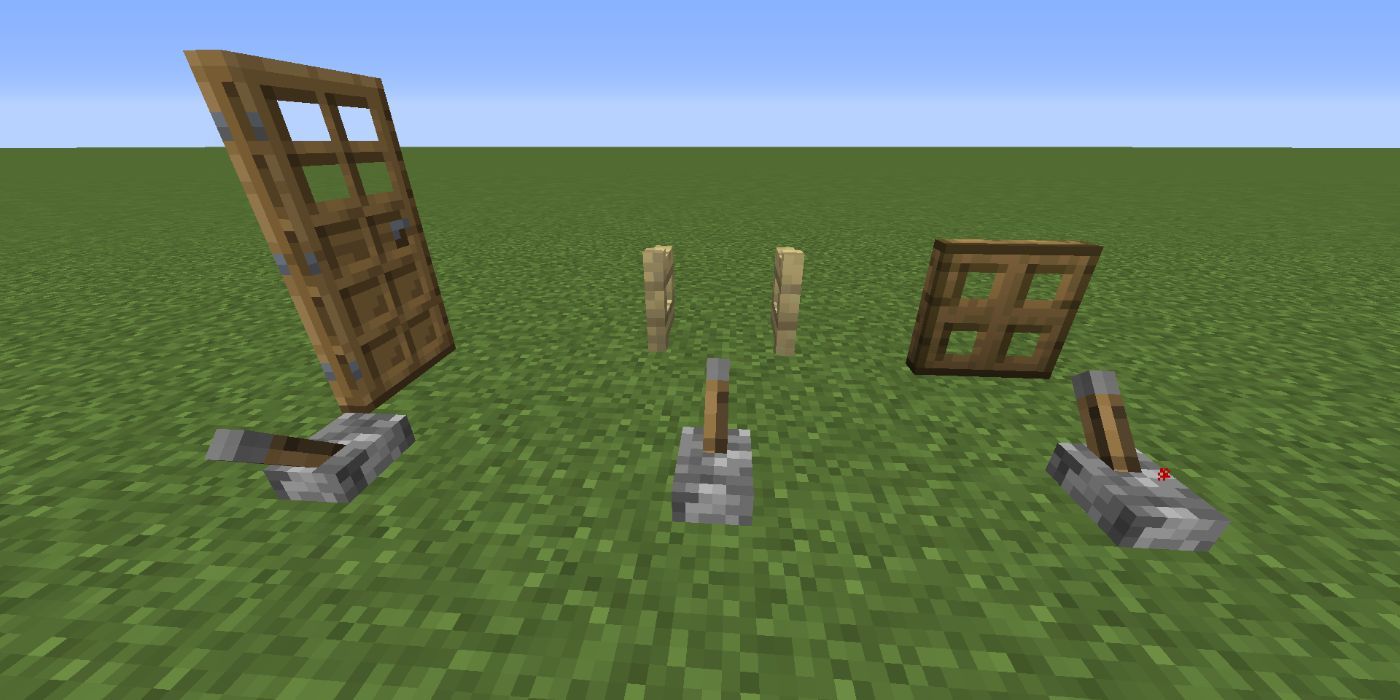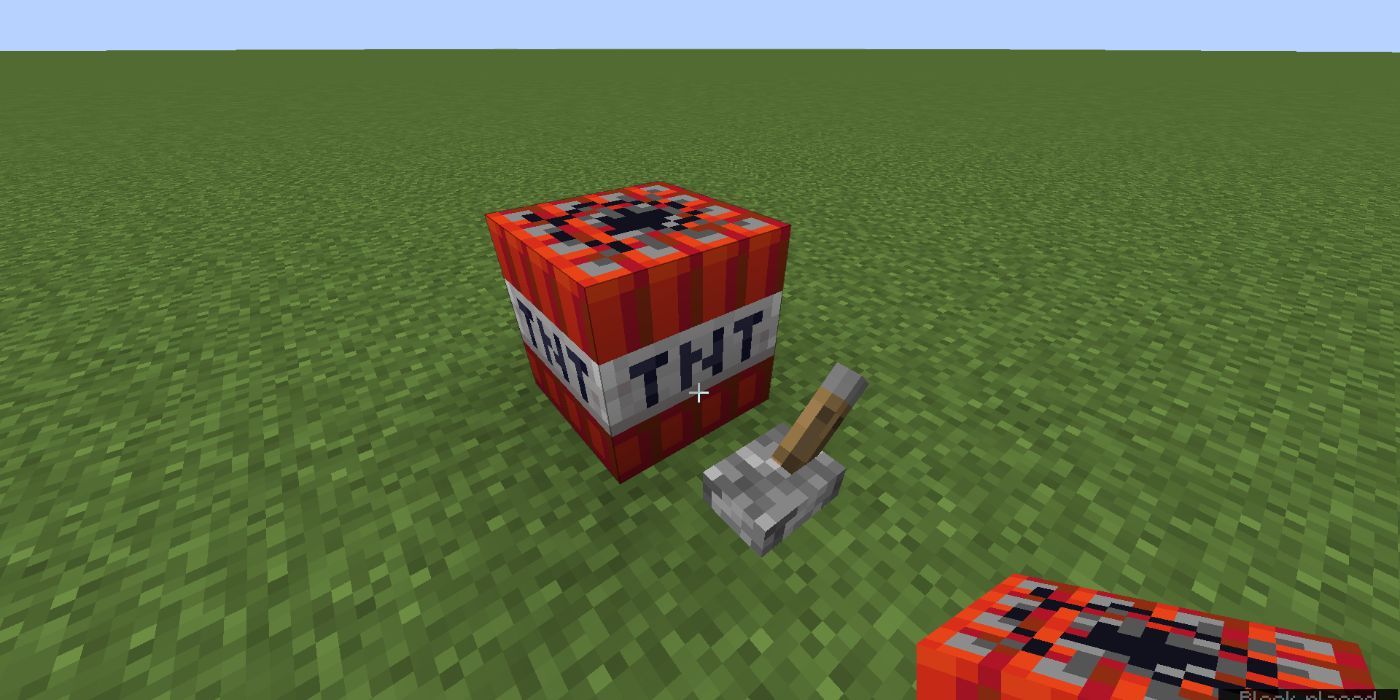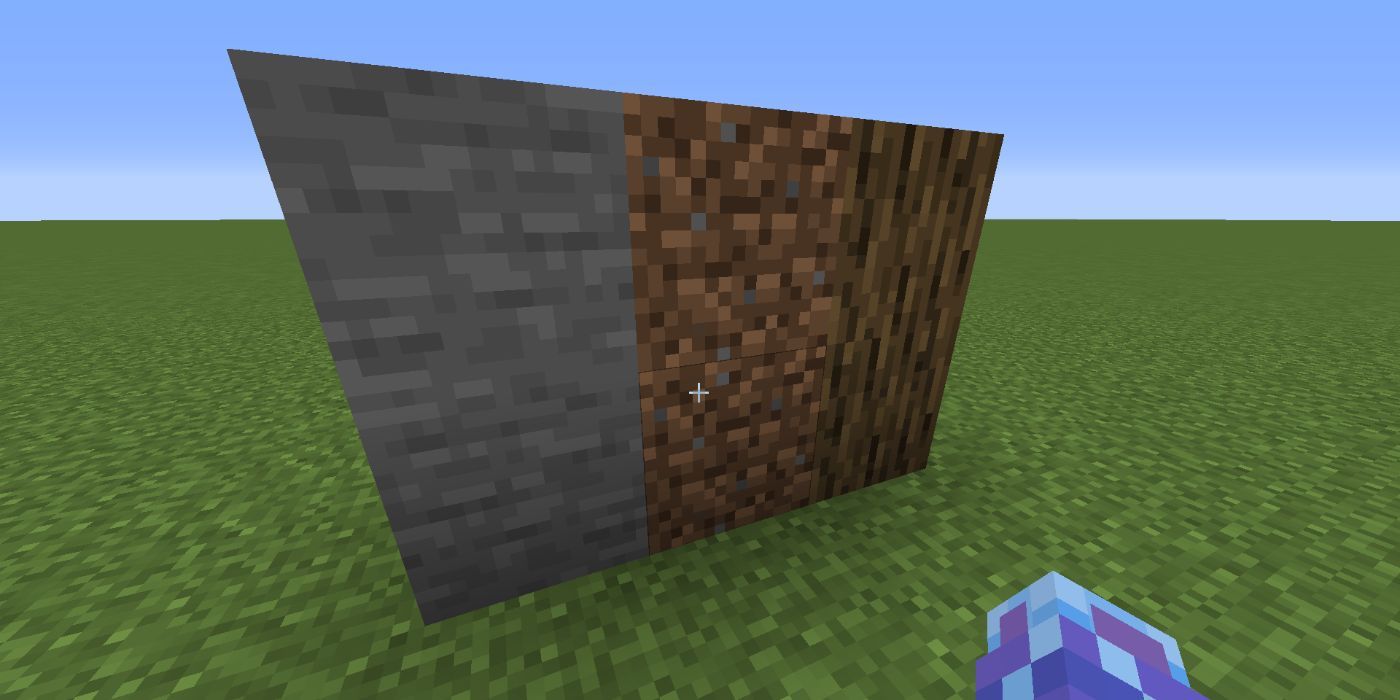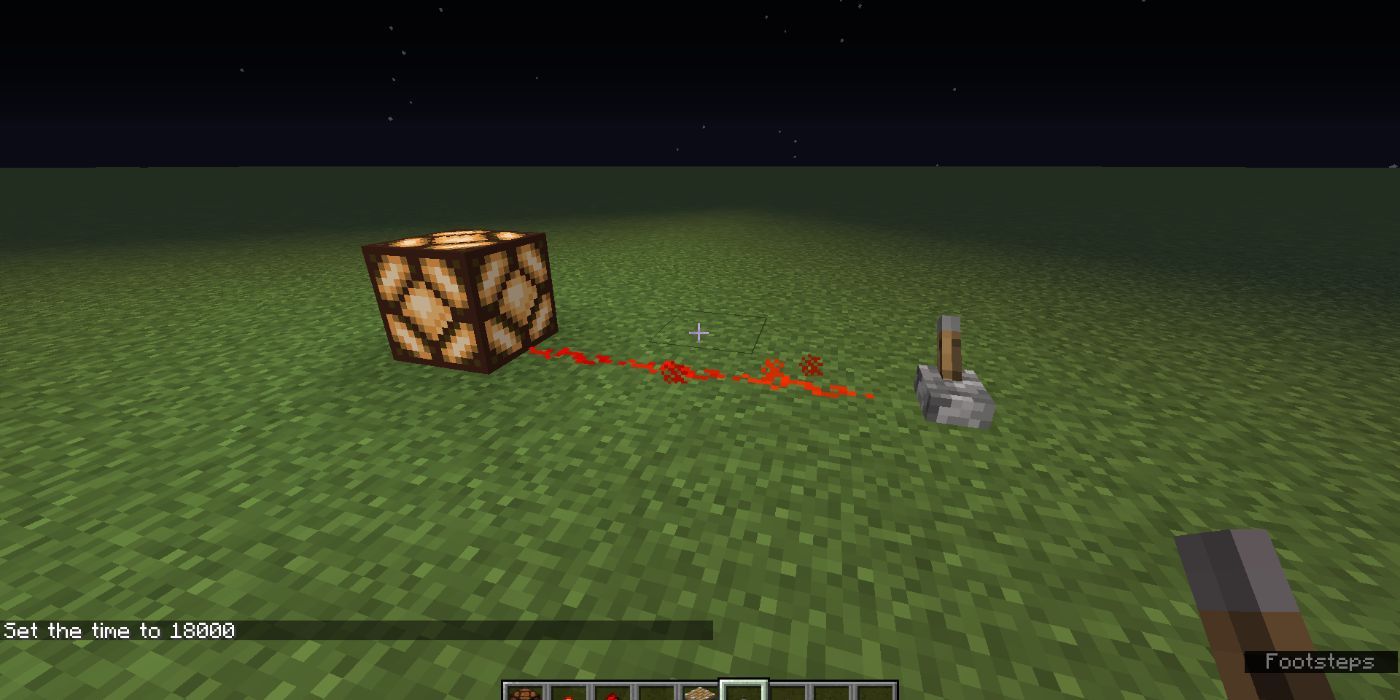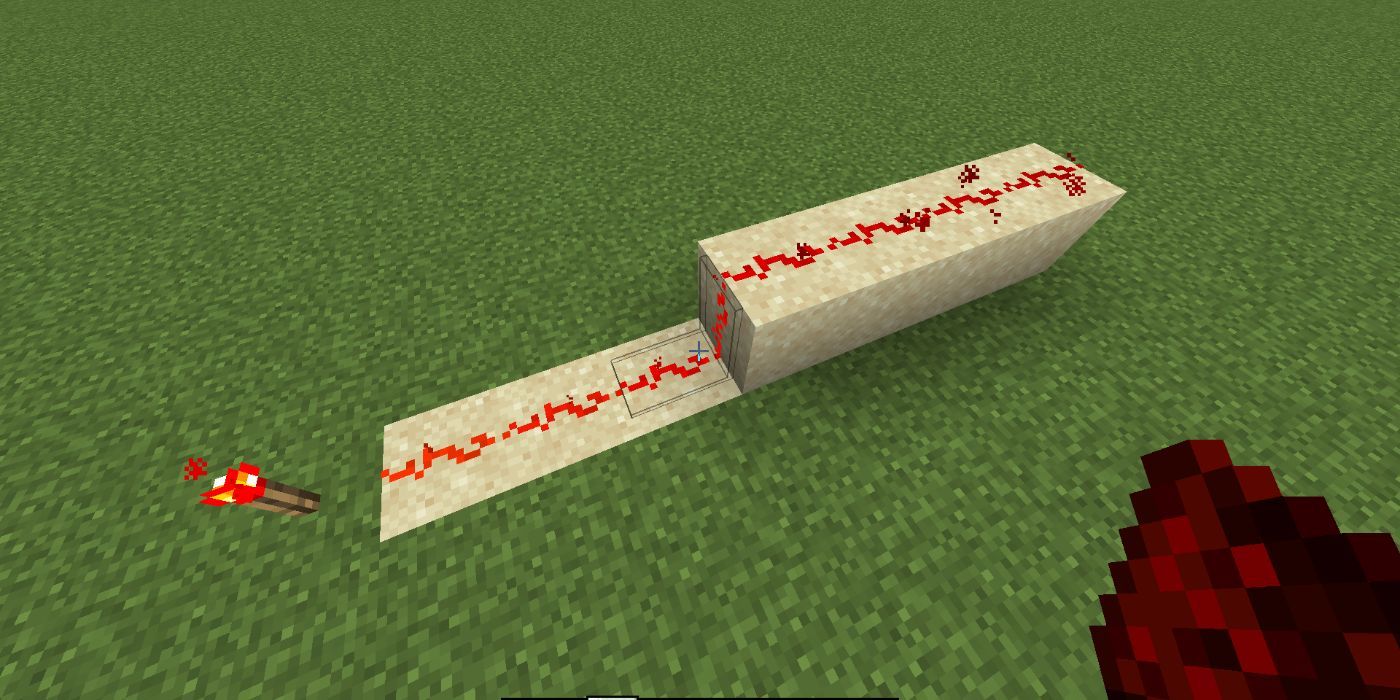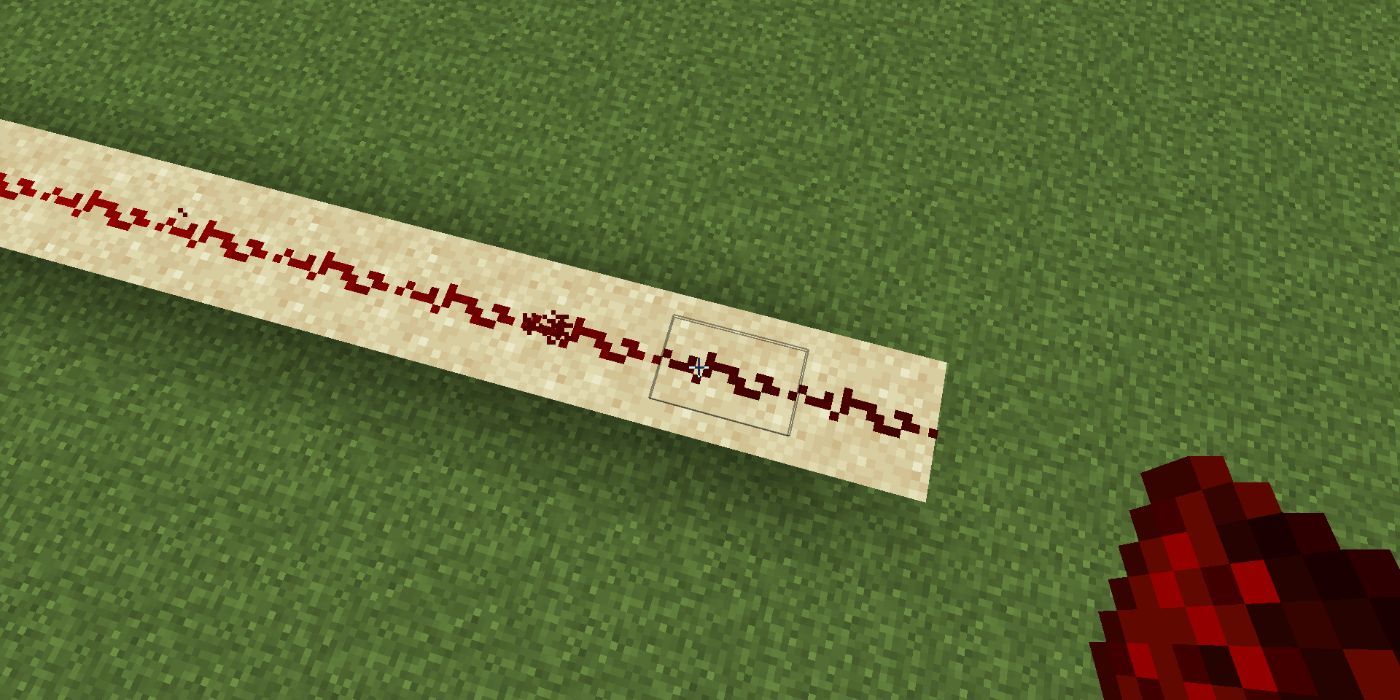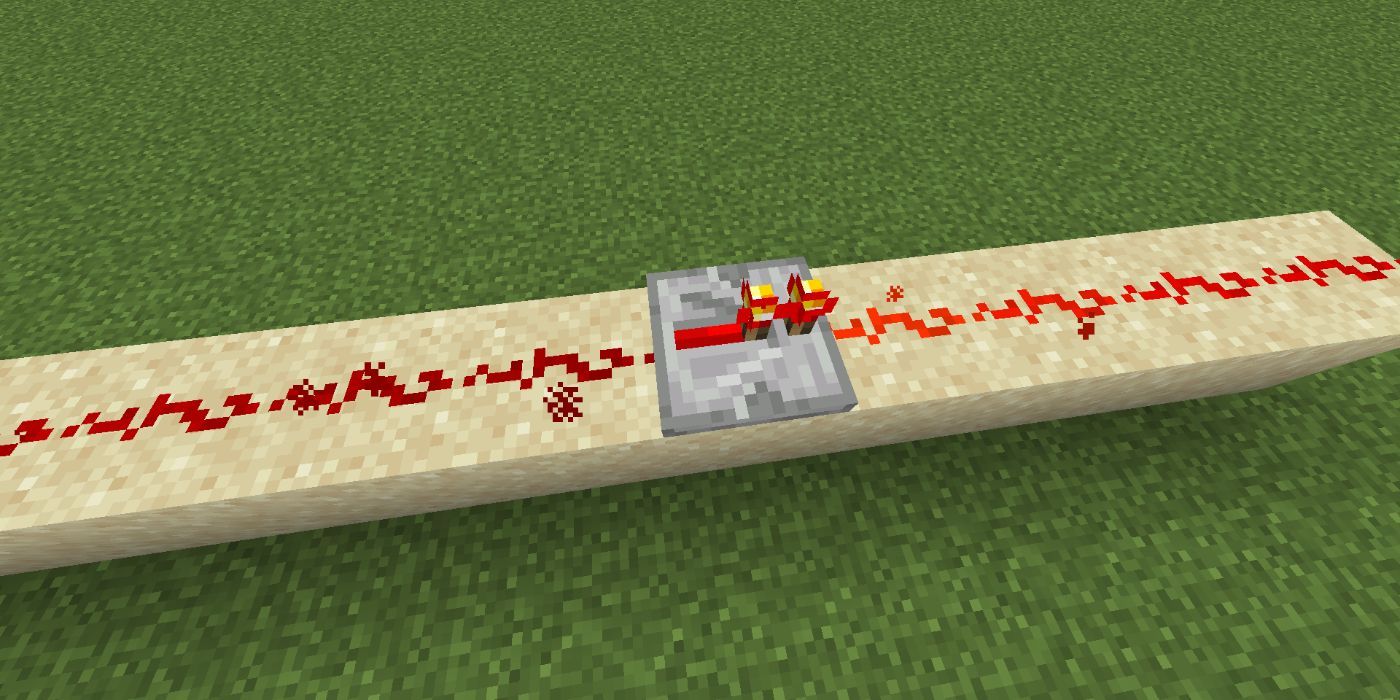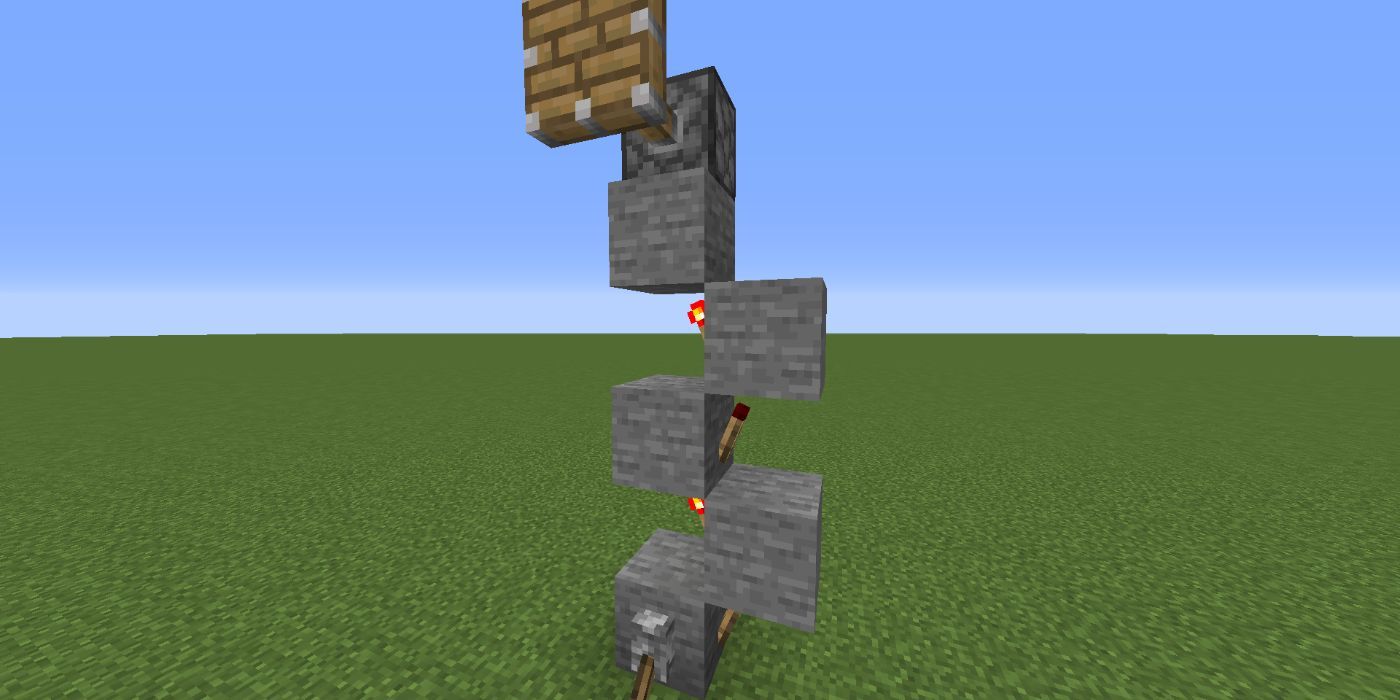Quick Links
Minecraft is a simple game at its core, but one feature has become almost feared among its players: redstone wiring and components. Redstone is that shimmering dust-like substance that can be found within caves in abundance, and which can be used to create various redstone components. It's the Minecraft equivalent of electricity. Due to redstone taking inspiration from engineering, it can be difficult to get into it and know exactly how and what you need to do.
However, those who master the art of redstone are able to create truly impressive creations, from combination locks and automatic farms to a fully-fledged automatic item sorter that removes the need of cleaning up and sorting chests. This guide will explain every part of redstone you should know at a basic level.
It will not tell you how to build a combination lock, but it will give you an understanding of the components, which can help you make your own creations with a bit of imagination.
Updated December 31, 2021, by Matthew Pentleton: Minecraft is an ever-evolving game, as a result of both the frequent updates the game receives and the technical advances made by the community. This guide has been updated to stay up-to-date and give you the best information possible to help you get to grips with the vast world of redstone.
How To Get Redstone In Minecraft
To get started on any redstone build, you'll need to go mining for redstone. It's a pretty common ore to find, but you definitely need to go deep enough to find it, and you will need an iron pickaxe or better to break it successfully. Having an enchantment like Fortune III is recommended if you're trying to get as much as possible at once.
Redstone generates between Y-levels -63 and 15, so check your debug screen if you're not sure what altitude you're on. The ore gets more and more abundant the deeper you go Mining the ore will drop redstone dust, which can be condensed into a redstone block by placing nine dust in the crafting grid.
Redstone dust can also be obtained from trading with novice Cleric Villagers, and is sometimes dropped by Witches when they're killed, so Villager trading en masse and Witch farms are both viable ways to procure lots of redstone with minimal effort.
What Do Redstone Components Do In Minecraft?
These are the basic redstone components you'll find in the game and a brief description of what each one does.
Redstone Power Sources
Power sources are blocks that automatically emit a redstone power signal. Some are stronger than others, and many of them need to be interacted with in order for the signal to be turned on.
Redstone Torches
The most basic power source, redstone torches grant power with a signal strength of 15 to any adjacent redstone dust, or to the block above them, from which a redstone dust signal can then be taken. Torches will also activate any redstone components above or beside them, such as pistons or lamps. Redstone torches won't power the block they're placed on.
If the block upon which a redstone torch is placed is powered, the torch will turn off. This is a super useful mechanic that allows you to turn an "on" (positive) signal into an "off" (negative) one with ease.
If a redstone torch is placed on the side of a block with redstone dust on top of it, with a block directly above the torch, the torch will power the block above, which will power the dust, which will power the block the torch is on, which will switch off the torch. This will repeat rapidly eight times before the torch burns out, making it useful for something you need to activate quickly a limited number of times.
Blocks of Redstone
A full block of redstone will give a signal strength of 15 blocks when connected to redstone dust. It will also activate any devices and blocks that are directly adjacent to one of its six sides.
What makes a block of redstone particularly useful is that it can be moved by pistons, unlike redstone torches, which allows it to fill a different niche.
Buttons
Buttons put out a single pulse of redstone signal when attached to redstone dust wiring. The signal travels for 15 blocks and activates any devices on its path. Buttons will also power the block they are attached to (if the block is a component, the component will activate), as well as blocks immediately adjacent to them in all six directions.
Wooden buttons give a pulse length of 15 ticks (roughly 1.5 seconds) and stone buttons give a pulse ten ticks long (roughly one second). Wooden buttons can also be activated by arrows.
Levers
Levers have the exact same range as buttons when used in wiring, meaning 15 blocks. They give out a continuous signal when the lever is flipped once, and can be turned off when flipped again.
A lever powers the blocks around it in the same way as a button, so any block it's attached to will be powered, as well as those around it.
Pressure Plates
Normal wooden and stone pressure plates, when stepped on by a player, will send out a signal of 15 blocks. Wooden ones will detect passive mobs, hostile mobs, dropped items, and players, while stone ones do the same but cannot detect items. They'll also activate blocks or components beside them, as well as directly underneath.
Weighted pressure plates are crafted with gold or iron will have a stronger signal the more entities are crammed on top of them, whether it's mobs or items dropped on the ground. Heavy weighted pressure plates require ten entities to be activated.
Observers
This face-looking device does exactly what its name implies: it observes whatever block is placed in front of it. When the block in front of it changes, the observer sends a quick redstone signal pulse for up 15 blocks max down a redstone dust wire, or into a block directly behind it. This pulse is only one tick long, making it very useful for a number of things.
The observer detects things like block movement, crop growth stage changing, grass being eaten, redstone components being powered or unpowered, and many more.
Daylight Detectors
The utility of this block is also in its name. It detects day and night cycles, and sends a redstone signal based on that.
You can choose day or night (inverted) mode by right-clicking the daylight detector. As the sun moves through the sky, the signal emitted by the daylight sensor increases, peaking at 15 around midday, before decreasing again down to zero at night. An inverted daylight detector works the same way but essentially detects darkness instead, peaking at a signal strength of 11 around midnight.
Tripwires
Great for making traps and such, when a player steps into a tripwire string suspended between two tripwire hooks, it sends a 15 block redstone signal while the player or mob stands on top of the wire.
The signal dies when the player or mob moves out of the trap. Tripwire also activates blocks or components directly adjacent to the tripwire hook.
Trapped Chests
Another great tool for traps and pranks, a trapped chest will activate any block or wiring within its direct range when opened. The signal is very poor, lasting only for one block, so you may want to use some additional repeaters for more elaborate traps.
Detector Rails
This special piece of rail will send out a 15 block strong redstone signal through wiring, and power any blocks within its direct range, whenever a minecart passes over it.
If you're looking to build a minecart system, this is a must-have component.
Comparators
Comparators are probably the toughest component to understand. They don't inherently have a redstone signal, but will rather output the same signal that goes into them.
Comparators have two modes: normal (the light at the front is off) and subtraction (the light at the front is on).
Normal mode: if the signal coming into a comparator from its side is stronger than the signal going into its back, then the output signal will be turned off.
Subtraction mode: the signal strength coming from the side is subtracted from the signal strength coming from the back. The resulting strength is then outputted from the front.
Comparators also have numerous interactions with other blocks, all to do with signal strength. The most notable is that it can detect how full containers like chests and hoppers are, emitting a stronger signal the closer the container is to capacity.
Sculk Sensors
The first form of "wireless redstone" to be added to Minecraft, sculk sensors send and receive signals based on sound vibrations. When a sculk sensor detects vibrations nearby, it will emit a redstone signal of a strength dependent on the sound it heard. In doing this, the sculk sensor itself vibrates, allowing you to make chains of sculk sensors with no wiring connecting them, and draw a redstone signal from the final one.
If you don't want your sculk sensor to detect vibrations, you can place wool around it to occlude it, which will prevent it from hearing anything from any direction blocked by wool. Sculk sensors are incredibly versatile, with their unique signal strength output system allowing you to detect specific activities, so for a list of every activity the sensor can detect and its corresponding signal strength, check out the Minecraft wiki.
Redstone Components And How To Use Them
On top of power sources, there are various devices that can be powered with a redstone signal, which will alter the state of the device to cause movement or some type of reaction.
Some of these are also just great additions to redstone machine and don't necessarily require any wiring, nor can they all be powered.
Pistons And Sticky Pistons
Pistons are pretty straightforward. When active, they become extended.
Normal pistons will extend by one block when powered, pushing the block in front of them in the direction the piston faces. When unpowered again, the piston will retract, leaving the pushed block where it was pushed to. Sticky pistons, on the other hand, can pull blocks too, making them far more versatile for the likes of hidden doors.
Two of Minecraft's most important redstone mechanics involve pistons. The first is something called BUD-powering, which is where a piston with a power source (like a powered block or block of redstone) two blocks above it, or diagonal - one block above and one block to the side - won't technically be powered, but will act as if powered when updated. Updating the piston usually takes the form of placing a block next to it. If the power source above is taken away, the piston will, seemingly magically, remain in a powered state until updated again.
The second important mechanic is a simpler one: when a sticky piston is powered by a pulse just one tick long, (a "one-tick-pulse") it will "spit out" its block, not pulling it back upon retraction like it seemingly should.
Redstone Lamps
Redstone lamps are just a simple source of light, which can be activated with redstone power and wiring. When turned on, they give off a light level 15 in the surrounding area, making them fantastic lamps. Pair them with daylight sensors, and you'll have automatic lights in your Minecraft base.
Redstone lamps are also solid blocks, meaning powering one lamp will power adjacent ones on all six sides, which makes it much easier to illuminate large displays.
Droppers
Not to be confused with dispensers, droppers will quite literally drop an item placed inside them when powered.
If a container is placed directly in front of a dropper, the items will be dropped inside the said container, namely a chest or a hopper.
Dispensers
Dispensers are very similar to Droppers, in the sense that they dispense items. However, their main specialty is the ability to fire arrows placed inside, making them great for traps and the like.
There are many other items that have special interactions with droppers: splash potions can be thrown, armour equipped onto an adjacent player, water can be poured from buckets, and shears can be used on sheep, to name a few.
Note Blocks
Note blocks can be used to make custom music in Minecraft. Right-click on a note block to alter the note that it makes, from lowest to highest. A note block will adopt the sound of a different instrument depending on the block it's placed on.
A redstone signal will emit a sound from it, and by queuing a number of them one after another, you could technically recreate an entire song.
Hoppers
Hoppers are one of the most important items for automatic farms. Items dropped into a hopper will be sucked in and funneled into a container the hopper points towards. A powered hopper won't move items, allowing you to turn item pipelines on and off.
In particular, hoppers are great for automatic inventory organizers. If you're looking to build one of those, we have a handy guide here.
Powered Rails
The powered rail is something every railway in Minecraft needs to keep the speed momentum of a Minecart.
At regular intervals in your railway, make sure to include a few powered rails, with redstone torches next to them. They will boost the speed of your cart, especially when going uphill.
Activator Rails
Certain minecarts can be activated when they pass through a powered activator rail. Make sure that a redstone torch is next to the activator rail to ensure it actually works.
The classic example is a minecart with TNT, which will detonate when it passes through a powered activator rail. Activator rails also eject mobs from Minecarts if they pass over the rails while they're powered, making them ideal for systems where you need to transport livestock or Villagers.
A Minecart With Furnace
Also known as a powered minecart, the purpose of the furnace inside is to push the Minecart forward on its own.
It has the power to push other Minecarts quite efficiently.
A Minecart With Chest
This is a self-explanatory one, but it comes in handy with redstone railways.
Ideal for transporting items across your mineshaft, the minecart with chest makes for easy inventory management.
Target Blocks
These are not just meant for target practice. Shoot an arrow into the target and it emits a signal with a strength that reflects your accuracy - the closer you were to the bullseye, the closer the strength will be to 15.
Blocks That Can Be Powered With Redstone
There are many blocks in the game that interact with redstone, even if they're not redstone blocks or devices by nature. The general rule is that any block considered transparent cannot be powered, while blocks that are solid and opaque, can be powered.
Doors
Any entrances, such as doors of all kinds from wooden to iron can be opened with redstone power sources like torches, buttons, and levers.
Pressure plates are a classic choice for doors. This also works for trap doors and fence gates.
TNT
As mentioned earlier with the activator rail, TNT is very susceptible to redstone.
Place it next to any source of redstone power that is either on by default or which has to be activated, and the TNT will detonate.
Solid And Opaque Blocks
As a reminder, any block considered transparent will not allow a redstone signal to pass through. Make sure to go for blocks that are full, solid, and opaque, such wood and wooden planks and stone variants.
A block can be powered one of two ways: strongly, which is when it's powered by a torch or repeater, or weakly, which is when it's powered by dust. A strongly powered block can have signal drawn from it by anything, such as dust, but a weakly powered block will need a repeater to draw power.
Stay away from blocks like glass, stairs, and slabs, though slabs that are combined into a full block will work.
How To Wire Redstone
Redstone wiring is done using the components we mentioned above. Here we take a look at how they all fit together and the common combinations you'll need.
How To Use Redstone Dust
Redstone dust is your go-to wiring method when it comes to redstone creations. In order to deliver a signal from a power source to a device or to a block that needs to be powered, you need to connect the two with redstone dust. It's sort of the binding glue between these two components.
The easiest example to showcase this is a simple redstone lamp that can be powered with a lever. The lever is the power source. Once flipped, a continuous signal is sent through the redstone dust wiring, until it reaches the redstone lamp. The redstone lamp is turned on, and once the lever is flipped again, it turns off.
The thing about redstone wiring that's great is that it's flexible. It can go in multiple directions, and even climb up blocks.
We'll go over vertical wiring further down below, but generally speaking, climbing up one block isn't going to break a redstone signal. The one thing to keep in mind is the strength of the signal from the power source, which is covered next.
If you're just using a single piece of redstone dust to move a signal between blocks and don't want it to activate other adjacent components, you can right-click it when you place it to turn it from a cross to a dot.
How To Use Redstone Repeaters To Extend Wiring
A power source will send a signal of a certain strength. That means that the signal can only reach devices and blocks in a specific range. Beyond that, the signal will be lost and become too weak.
This is easy to spot just by looking at your redstone dust wiring while your power source is on. The brighter the dust looks and if it has a distinct particle effect, the stronger the signal is.
If the dust looks dark red and doesn't move, the signal isn't strong enough, and you need to extend your wiring with a repeater.
A repeater can be placed almost at the end of a chain of redstone wiring, and it will boost the signal back to its full strength.
The repeater can also be used to introduce delays into the redstone signal. If you'd like there to be a slight delay to how long a lever flip takes to turn on a redstone lamp or activate a device, the repeater can be used to delay the signal up to four ticks.
How To Wire Redstone Vertically
Depending on what you're building, you might want to have your redstone wiring done vertically. Luckily, most blocks, when powered, will affect any redstone dust or torch attached to them, which allows for the creation of various redstone ladders that deliver signals vertically.
Redstone torches in particular are fantastic for this, due to the mechanic mentioned earlier where they switch off. You can use this to create torch towers like the one pictured, which let you move a signal vertically upwards in a very compact way.

